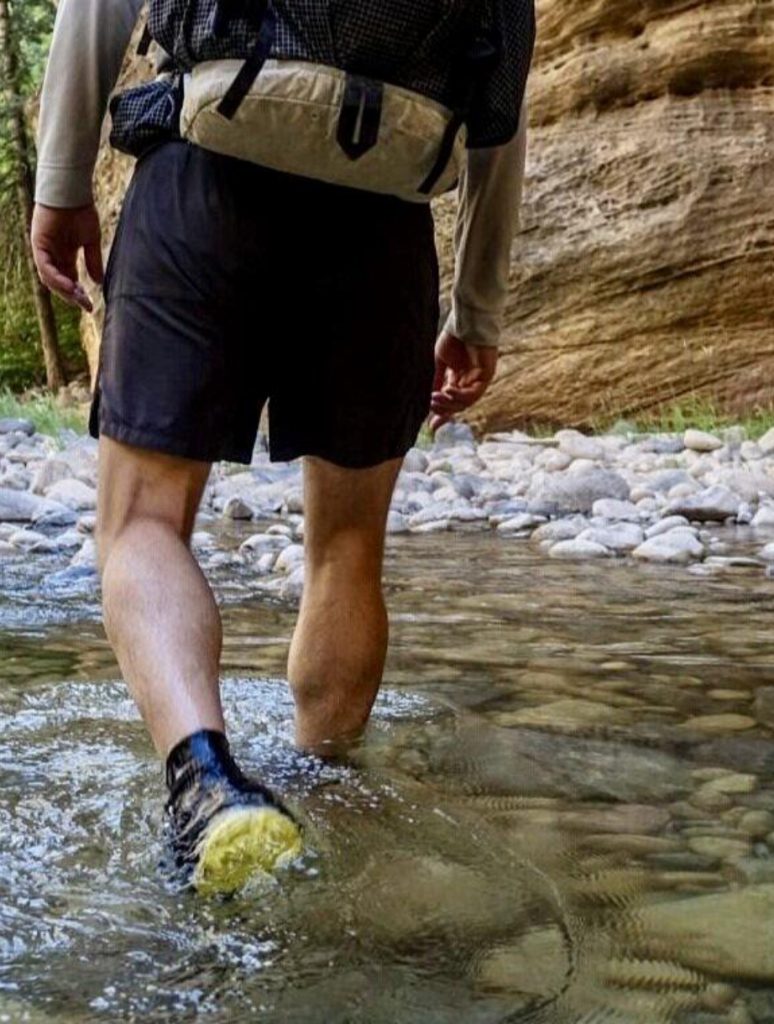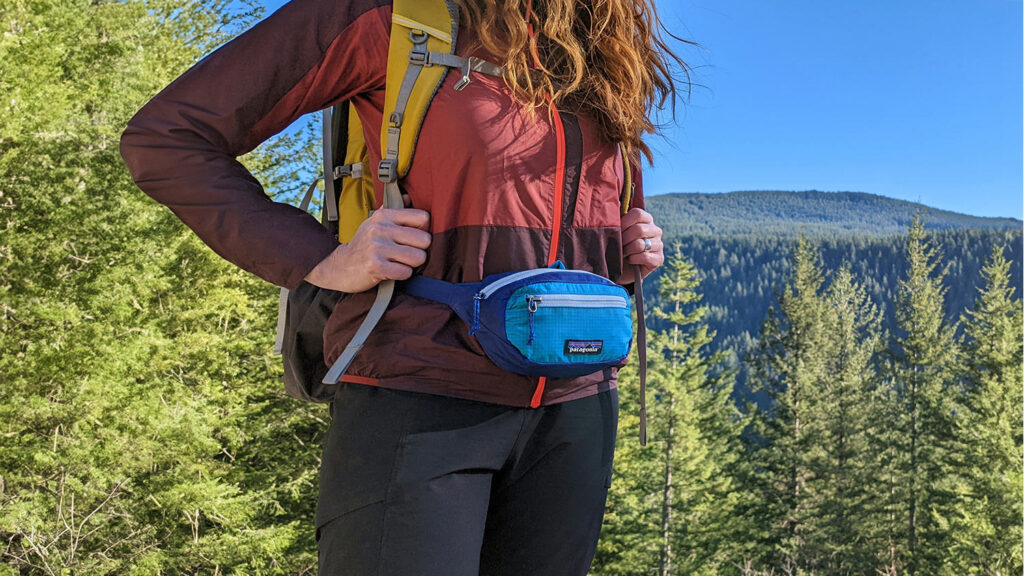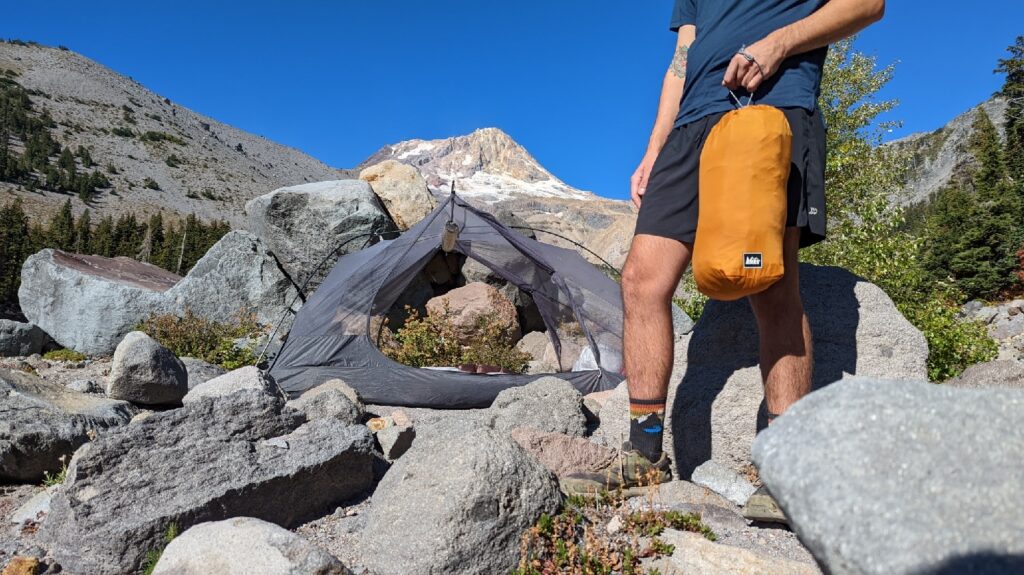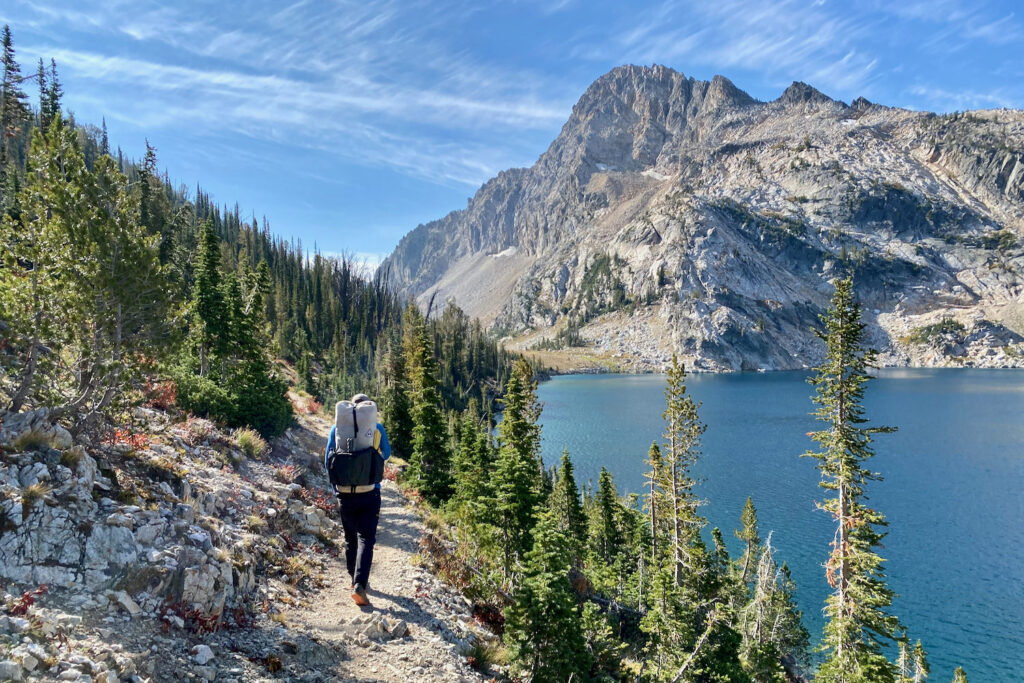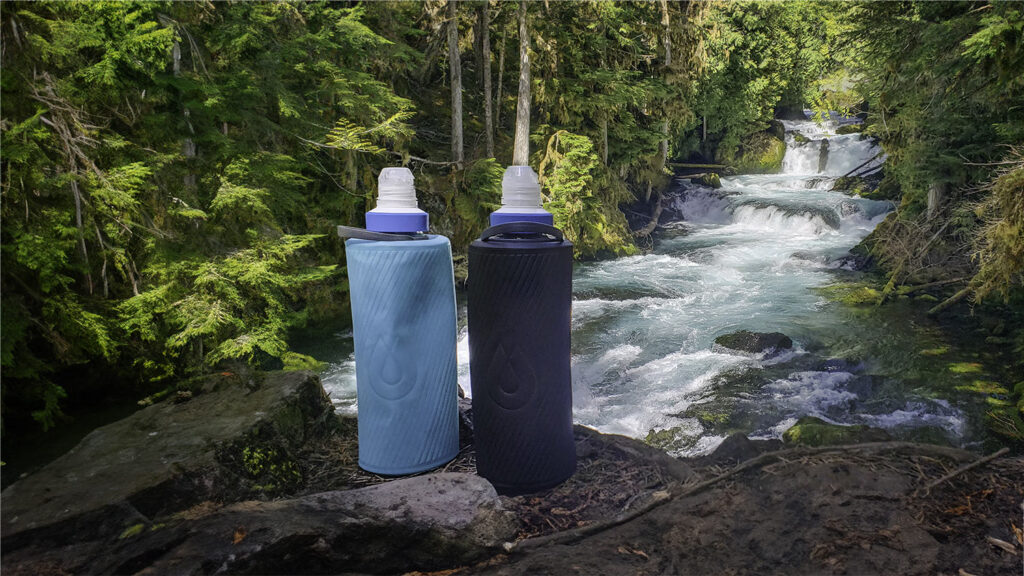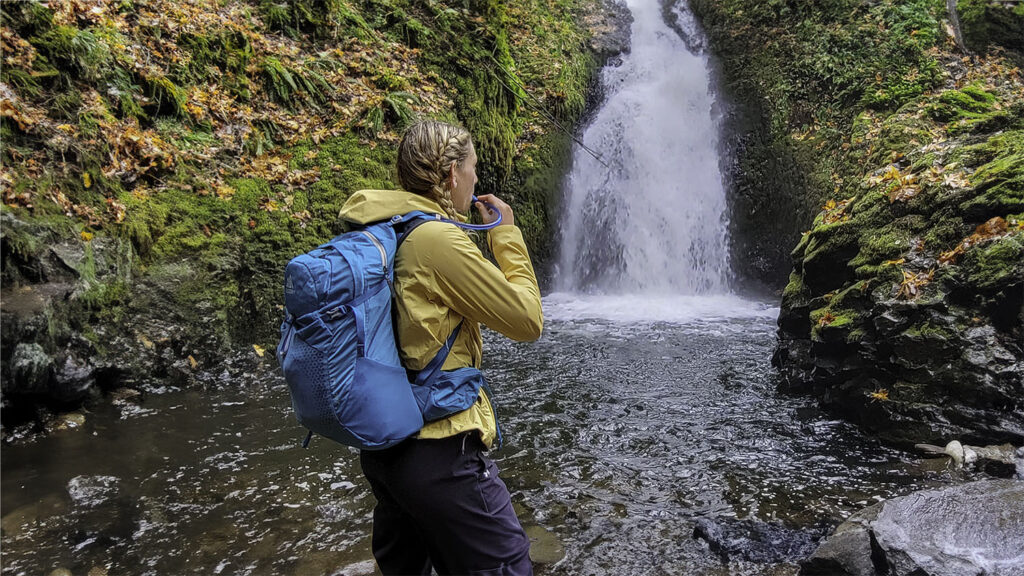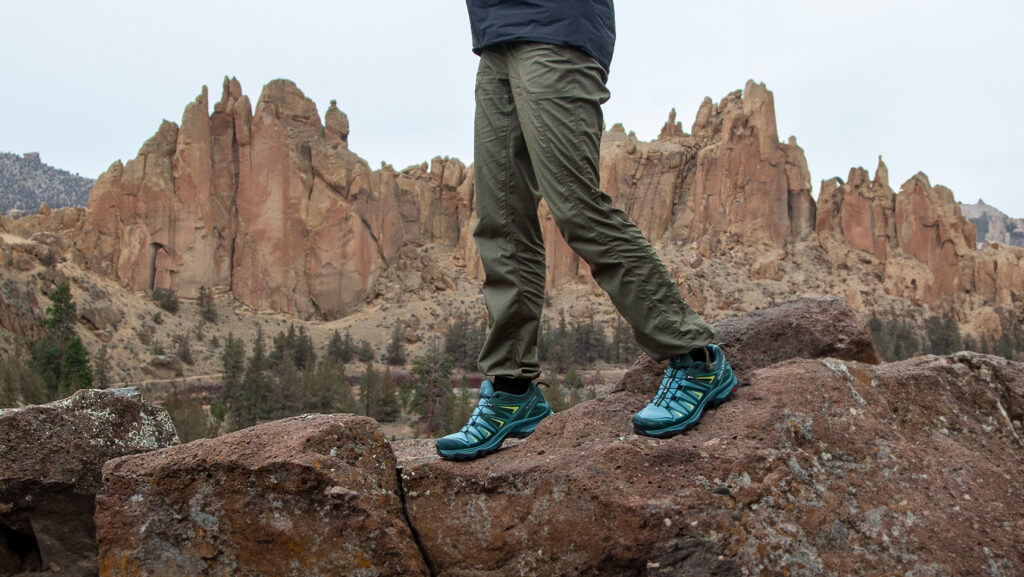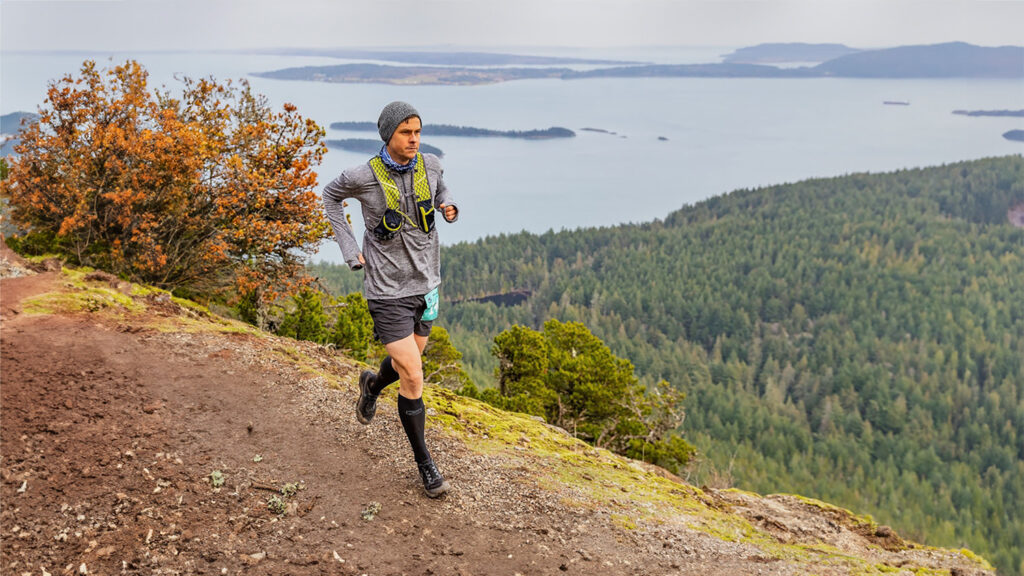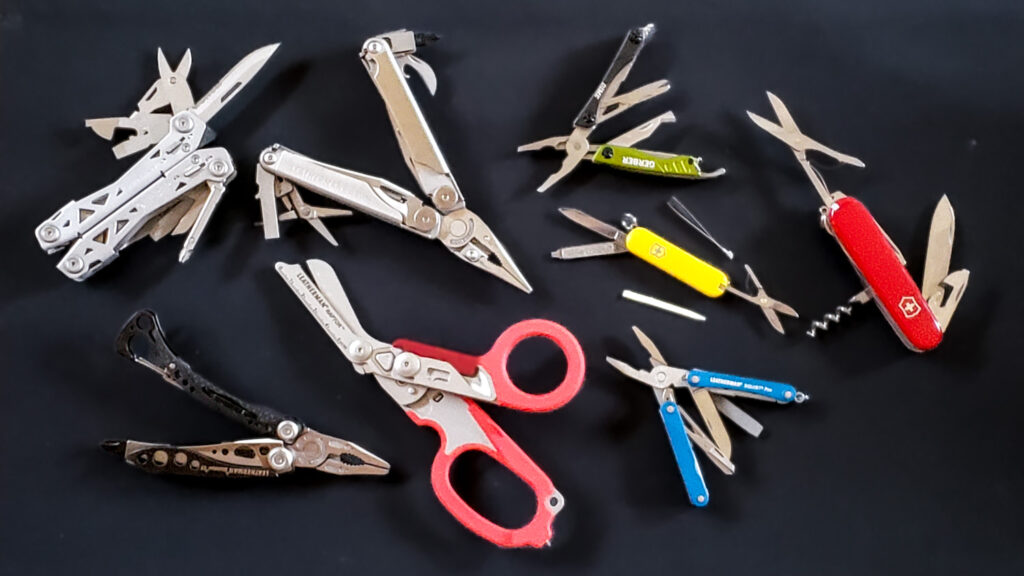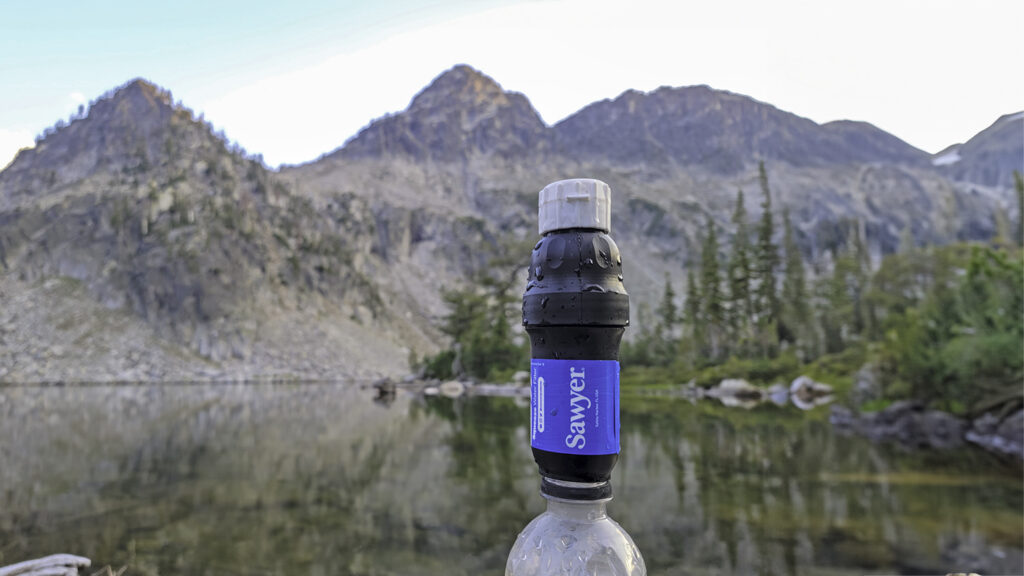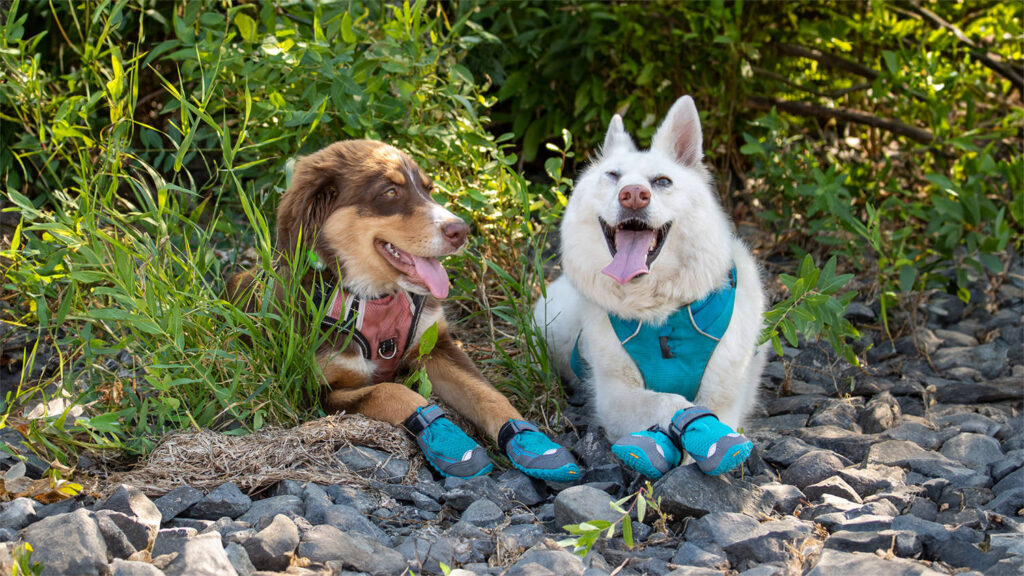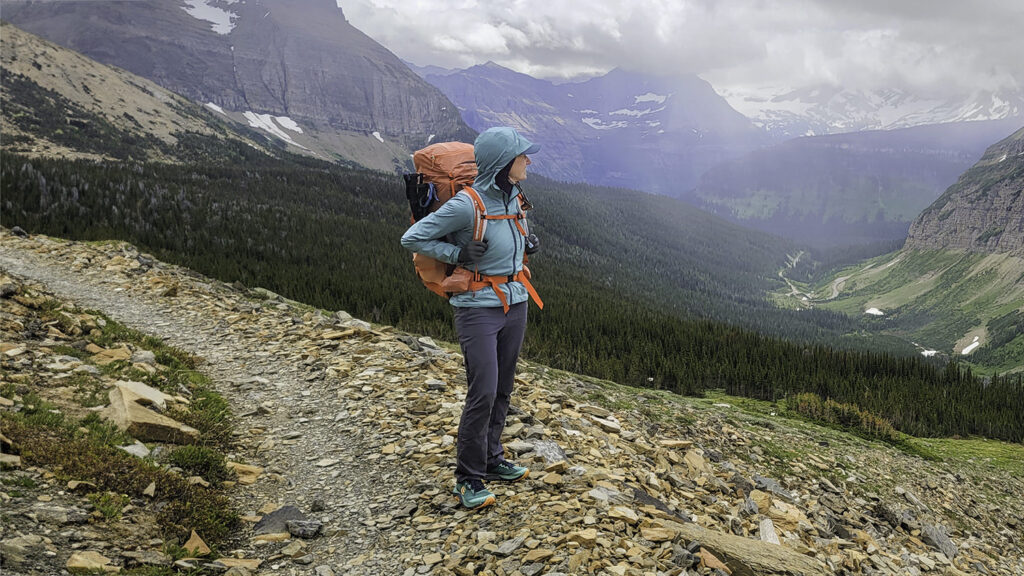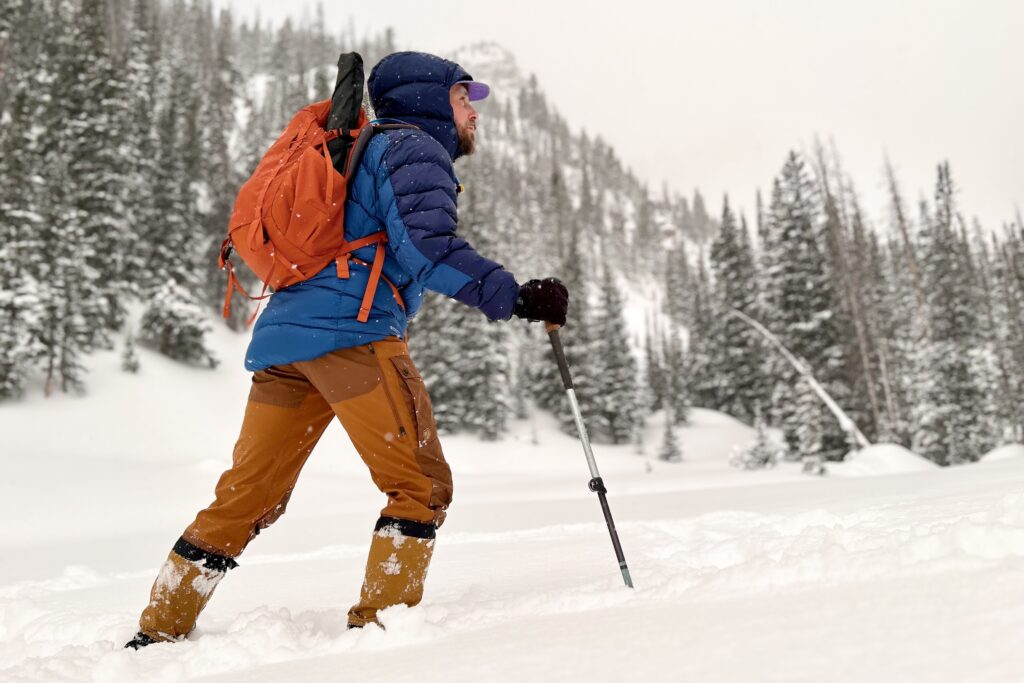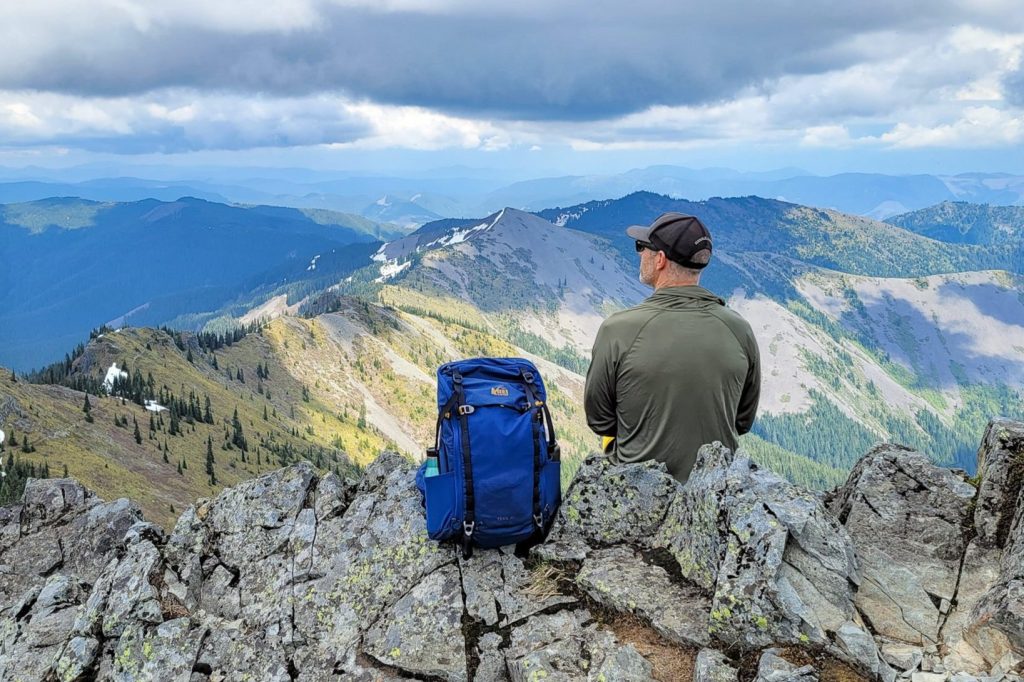
When you’re heading out for a fun day on the trail, it’s vital to have all your essentials quickly and easily accessible. We’ve researched 45 daypacks and bagged over 700 mountains to test the 12 most promising options on the market. Our team of experts has tested packs from brands like Osprey, REI, Gregory, LL Bean, and more to curate our recommendations for the very best. Whether your top priority is comfort, organization, user-friendliness, durability, or weight and compressibility – we’ve got your back.
And for more info, check out some of our other popular gear guides:
Quick Picks for DayPacks
Check out this quick list of the best daypacks or continue scrolling to see our full list of favorites with in-depth reviews.
Best Daypack Overall: Osprey Talon 22 Men’s ($160) / Tempest 20 Women’s ($160)
Best Minimalist Daypack: REI Flash 22 ($60)
Best Hydration Daypack: Gregory Citro 24 H2O Men’s ($170) / Juno 24 H20 Women’s ($170)
Streamlined Pack that Balances Support & Simplicity: Salomon Trailblazer 20 ($75)
Best Compressible Daypack: LL Bean Stowaway 22 ($65)
Best feature-forward pack with larger capacity: Rab Protium 27 ($180)
Best Budget Daypack: Osprey Daylite Plus ($75)
Comfortable & Well-Ventilated Backpack for Long Days: Gregory Zulu 30 ($170)
Roomy Daypack for Travel & Long Hikes: REI Trail 25 ($100)
Best Ultralight Daypack with a Large Capacity: Six Moon Designs Wy’east ($185)
Supportive & Well-Ventilated Daypack for Long Hikes: Osprey Stratos 24 Men’s ($180) / Sirrus 24 Women’s ($180)
Versatile Backpack for Fast Gear Access: Mystery Ranch Gallagator 25 ($129)
Best Bang for Your Buck: Venture Pal 35 ($26)
What’s new
Our team has been busy evaluating some new daypacks and testing out revamped versions of our all-time favorites:
- The Rab Protium makes its debut on our list.
Hiking Daypacks Overall Testing Scores
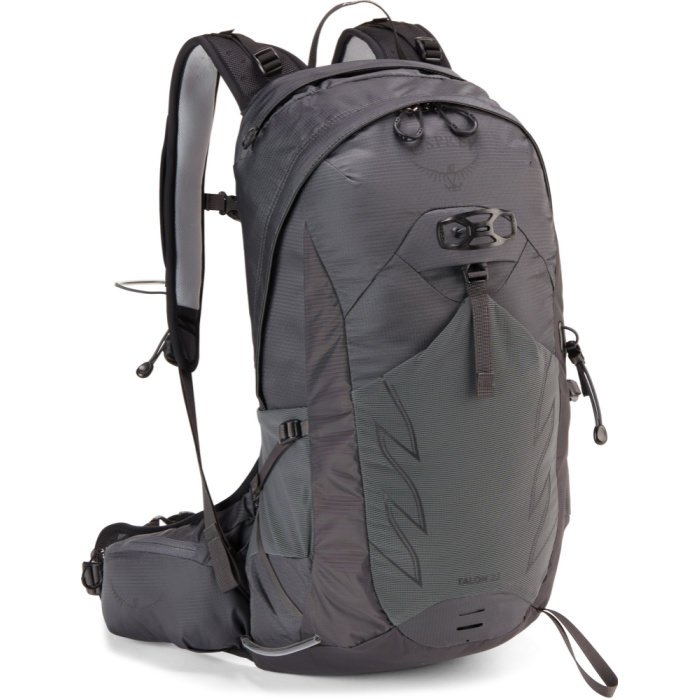
Osprey Talon 22 / Tempest 20
Best Daypack Overall
Price: $160
Weight: 2 lb. 1 oz. / 1 lb. 14.6 oz.
Capacity: 22 L / 22 L
Frame: Internal framesheet
Pros
- Comfortable hip belt and shoulder straps
- Padded and ventilated back panel
- Supportive frame
- Good organization
- Large, convenient main compartment opening
- Durable material
- External hydration sleeve
- Inclusive sizing
Cons
- A bit expensive
- On the heavier side
- Hydration sleeve is narrow
The Osprey Talon 22 (men’s) and Tempest 22 (women’s) win our best daypacks overall, thanks to their exceptional comfort and versatility. With padded shoulder straps, ventilated back panels, and wide, cushy hipbelts, these packs conform nicely to the body. The adjustable torso harness makes it possible to create a customizable fit for most body shapes and sizes. They offer a robust but slightly flexible framesheet, so they ride comfortably whether fully loaded or carrying just a few items.
The Talon and Tempest are suitable for a wide array of activities. They have tons of convenient storage compartments to keep you organized for a full-day hiking adventure. The two large hipbelt pockets are big enough to fit a phone or snack. We found the water bottle holders are a bit tight for larger bottles, but they are easily accessible with the pack on. We also appreciate the helmet attachment clip for thoughtful storage when biking around town or climbing in sketchy areas.
That said, these bags are a bit on the heavy side, and they’re a little bulky for their size, which may miss the mark for casual hikes and folks who prefer ultralight and minimalist setups. The external pockets and brain pockets can also encroach on the bag’s internal space when they’re full, which can make it a bit cumbersome to access gear in the main storage pocket.
Osprey doesn’t skimp on any features when it comes to the Talon and Tempest – there’s a pocket, strap, and zipper for almost any adjustment or storage you might want. These are premium, full-feature daypacks, and they have the price to match. They might not fit everyone’s budget. But we think they’re worth every penny if you’re after a do-it-all workhorse that can take you from the maples to the meeting room and last for years of rough use.
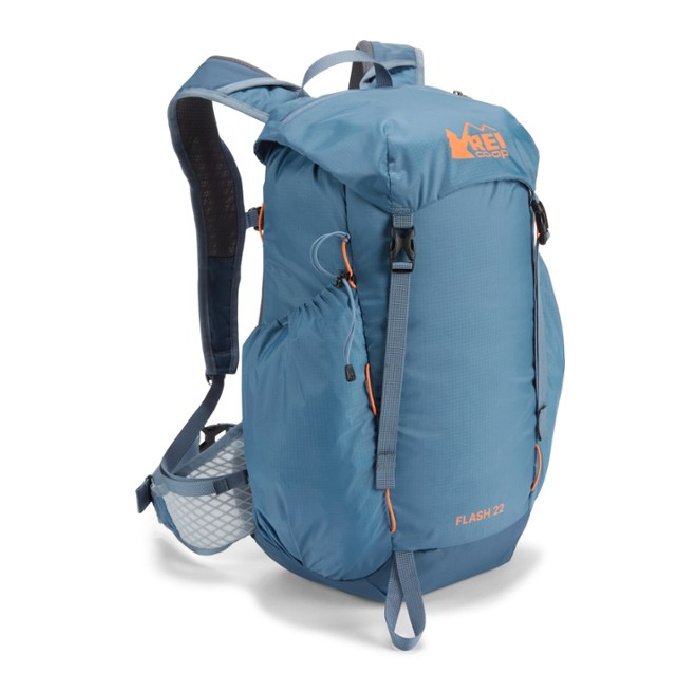
REI Flash 22
Best Minimalist Daypack
Price: $60
Weight: 14 oz.
Capacity: 22 L
Frame: None
Pros
- Affordable
- Lightweight
- Comfortable back panel
- Good organization for a minimalist design
- Frame doubles as removable sit pad
- Packable
Cons
- Minimal structure
- 2-clip system for brain is clunky
- Floppy when empty
We love the REI Flash 22. From short hikes where we don’t need to pack a lot of extras to quick grocery runs to 40-mile fastpacking adventures, it is one of our go-to bags. This daypack is one of our favorites due to its affordable price, lightweight design, and smart pocket layout. It also comes in a wide variety of colors and patterns.
For the minimalist, the Flash 22 is all you need. Gear Analyst, Ian Krammer, has summited over 600 peaks in the Colorado Rockies with the Flash 22, and he rarely needs more than it gives him. The storage is generous for a small bag, and the organization is intuitive and simple.
We like the removable sit pad for breaks in the shade, and the thin foam adds just a bit of support to the back of the pack. At a mere 14 ounces, this is one of the lightest bags on our list, which makes it an excellent choice for keeping overall weight down. Plus, it rolls and folds small for stuffing in luggage or a bigger backpack.
The drawback is that the Flash 22 doesn’t have much structure, padding, or adjustability. If you’re planning long dusk-to-dawn adventures, you may want a bag with a more substantial hipbelt, internal frame, and a larger carrying capacity.
And because it’s so lightweight, the pack can feel floppy when it’s not full. We also find a few elements of the pack a bit awkward, like the discreet vertical storage pocket on one side and the double-clip for the brain. This bag is also not the most durable out there.
Still, the Flash 22 is outstanding for lightweight comfort and convenience. The water bottle holders are easy to reach, the zippered pocket on the top lid is perfect for storing small items we need often, and there’s just enough structure in the back panel and hipbelt to feel comfortable for long periods. We love this little daypack – and we think you will too.
More: REI Flash 22 Full Review
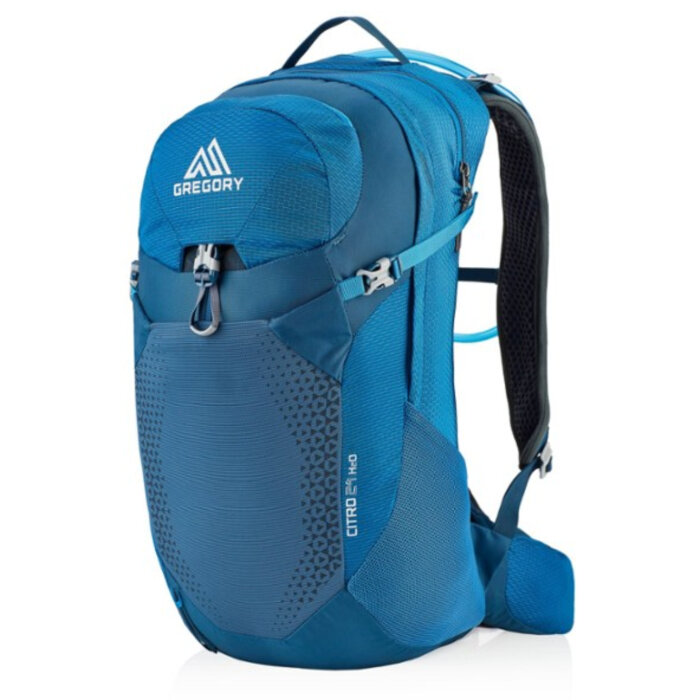
Gregory Citro 24 H20 / Juno 24 H20
Best Hydration Daypack
Price: $170
Weight: 2 lb. / 1 lb. 15 oz.
Capacity: 24 L
Frame: Aluminum alloy Frame
Pros
- Hydration bladder included
- Very comfortable
- Good internal structure
- Transfers weight to hips well
- Good organization
- Large & convenient opening for main compartment
- Durable
- Plus size available
Cons
- Heavier than some
- Expensive
- Side pockets are tight for wide bottles
The Gregory Citro 24 H20 (men’s) and Juno 24 H20 (women’s) are our favorite hydration packs. These bags feature simple, strong frames that offer just enough support to transfer weight to your hips for a very comfortable carry. We’ve found that with the 3-liter reservoir and all pockets full, these bags are more agile and streamlined than other daypacks with a similar capacity and weight.
The Citro and Juno have a ton of useful pockets, including large and small zippered compartments, hipbelt pockets, and a stretchy front mesh pocket for stashing your hat or jacket. We appreciate the small pocket at the top with a divider for keys, chapstick, and more. Daypacks with zippered main compartments like this – as opposed to backpacks with the drawstring and top lid design – are often quicker and easier to get in and out of.
Gregory also includes our top choice for hydration bladders – the 3-liter Gregory 3D Hydro – with the Citro and the Juno. We’re big fans of this reservoir because it’s durable, functional, and exceptionally easy to keep clean. These bags are built around the 3D Hydro, including adjustable clips to mount the mouthpiece on the shoulder straps, a ventilated mesh back to increase airflow, and a thick internal clip to keep the reservoir upright.
The reservoir is included, so you’ll pay a bit more for the Citro and Juno, but these durable, made-for-the-trail bags will pay you back over and over. They are a bit on the heavy and bulky side, though, so if you like a sleek, small daypack, these may be a bit much.
If you don’t need the bladder, we also love the regular Citro 24 and Juno 24, which cost less. But for hikers who want comfort, storage, and one of the best hydration systems on the market all in one bag, we highly recommend the Gregory Citro 24 H20 and Juno 24 H20.
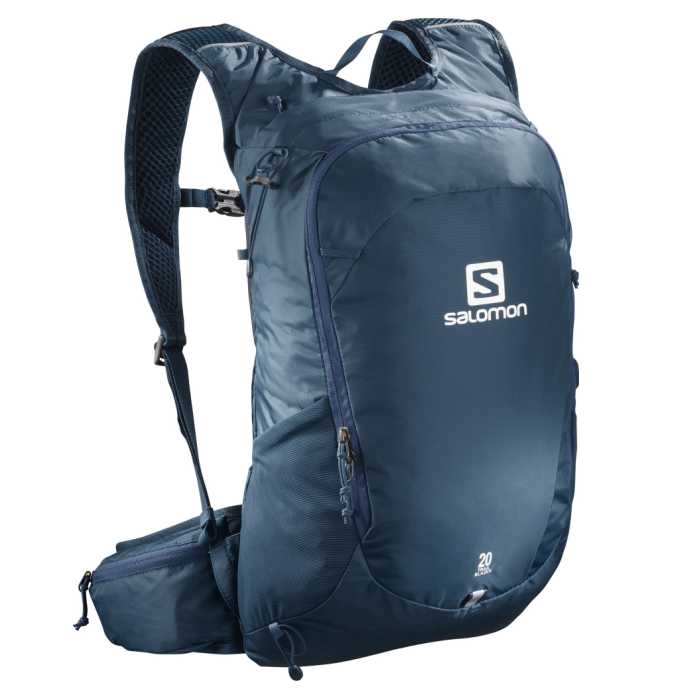
Salomon Trailblazer 20
Streamlined Pack that Balances Support & Simplicity
Price: $75
Weight: 14.6 oz.
Capacity: 20 L
Frame: None
Pros
- Lightweight
- Comfortable straps
- Simple compartments
- Slim profile
- Zippered waist pocket
Cons
- Side pockets too small for many water bottles
- Tapered bottom limits internal storage
- No stuff pocket
The Salomon Trailblazer 20 is comparable in size, shape, and comfort to the REI Flash 22, but it features a bit more padding and a hipbelt with a pocket on each side. It also has a big, U-shaped zipper that makes organizing and accessing items in the bottom of your pack a piece of cake. It’s a simple and familiar design, but its ultralight status makes it perfect for adventures where you’re only taking a few essentials.
The Trailblazer 20 comes with intuitive and user-friendly storage. A small zippered pocket at the top is perfect for sunglasses, chapstick, and other small items. A large U-shaped zipper offers lots of organization inside for easy access to most of the pack. A wide internal pocket that serves double-time as a hydration reservoir when hiking or as a laptop pocket for work.
Overall, we like the stylish and minimalist design of the Trailblazer 20, but we wish the bottom wasn’t so tapered. This profile gives the bag a sleek and stylish look, but it limits the internal capacity. The side pockets are a bit too small to hold water bottles, and the two small lash points feel like an afterthought. That said, the minimal external pockets and straps work perfectly for fast and light adventures.
The Trailblazer 20 is a great ultralight option and one of our favorite small daypacks. If you’re after a simple, durable, and comfy bag for carrying only the essentials and moving fast, this bag checks all the boxes.
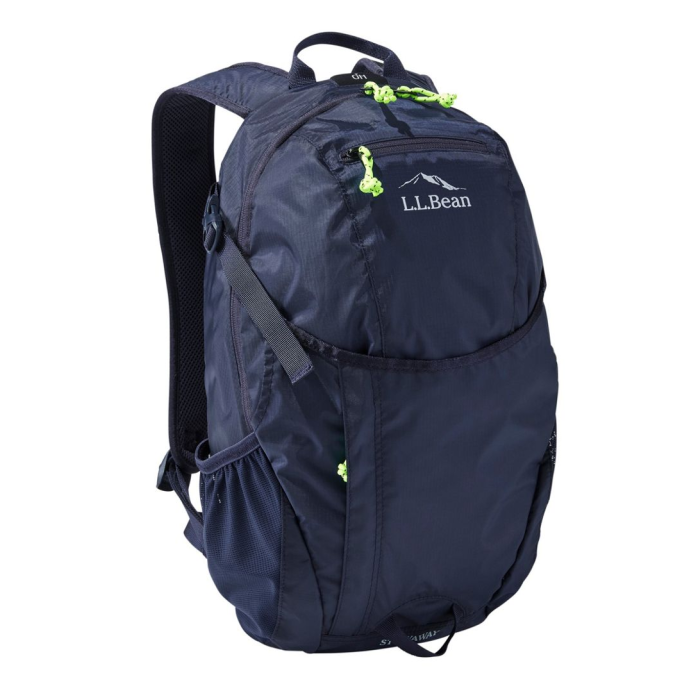
LL Bean Stowaway
Best Compressible Backpack
Price: $65
Weight: 14 oz.
Capacity: 22 L
Frame: None
Pros
- Packs small (6”x6”)
- Tons of pockets
- Lightweight
- Less expensive
Cons
- Not as durable
- Uncomfortable over extra long distances
- Shallow mesh pockets
The LL Bean Stowaway Pack is a small workhorse for hikes, travels, or on-the-go adventures. This stowable pack delivers in spades, including plenty of storage, padded mesh for comfort on the back and shoulder straps, and a clean aesthetic.
The main highlight of the Stowaway is just how lightweight and compressible it is. This stylish award-winner weighs a mere 14 ounces. It only takes 1 to 2 minutes to transform into a package only 6 inches square. At that size, it easily fits in a suitcase or backpack when heading out on longer trips, making this bag a perfect choice whether you’re day hiking or traveling around the world.
And the Stowaway is super functional. This model punches well above its weight class for organization and comfort, featuring six functional pockets, adjustable sternum and waist straps, and multiple colorways. It’s made of 75D ripstop polyester, making it more durable than other packable backpacks. This is the ideal bag to deploy for side trips, summits, and smaller excursions while you leave the rest of your gear behind for a bit.
The tradeoff for that packability is that the Stowaway 22 has no frame, so it isn’t great for super long days on the trail where it needs to be packed carefully to distribute weight well. We recommend a clothing layer inside the pack against your back for cushioning to add a bit of structure to the bag. However, it’s very convenient for travel and short hikes.
We also find that the pocket designs aren’t perfect : the internal pocket is blocked if you’re using a hydration bladder, and the side pockets are too shallow to hold water bottles. And, it can be difficult
This little pack is simple, stuffable, and super versatile. If you keep the load light, you’ll hardly notice it on your back – and for such a low price, you’ll hardly notice it on your wallet, too. The LL Bean Stowaway is a great choice for travelers, hikers, and people who need a lightweight, packable daypack.
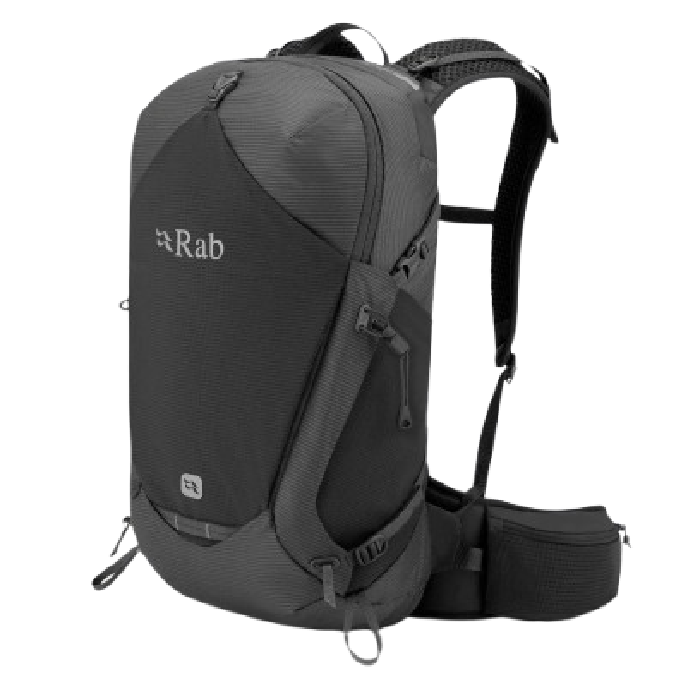
Rab Protium 27
Best Feature-Forward Pack with Larger Capacity
Price: $180
Weight: 2 lb. 6 oz.
Capacity: 27 L
Frame: Internal
Pros
- Highly customizable fit
- Comfortable shoulder & waist straps
- Excellent pocket organization
- Included raincover with dedicated pocket
- External hydration sleeve
- Breathable
Cons
- Narrow hydration reservoir pocket
- 27 liters is large for many day hikes
- Shoulders straps could use more padding
- Technical features are overkill for simple hikes
In Spring 2025, Rab rolled out its Protium line of backpacks, and we were immediately impressed with the Protium 27. This is a rugged and versatile bag with plenty of storage, technical features, and outstanding comfort. It performed well during 200+ miles of testing in rough landscapes across Colorado and Utah, making it an Editor’s Pick on our 2025 list.
The Protium 27 is comfortable thanks to a super customizable mesh back panel that works for different torso lengths and body shapes. The breathable back panel design helped us dump sweat on hot days, and wide, cushioned foam waist straps kept us comfy from 20°F to 90°F. We did find that the shoulder straps felt a bit thin and uncomfortable with loads over 25 pounds, but this was a minor issue for most hikes.
With a 27-liter capacity, the Protium carries weight well thanks to a ton of smart storage. We found a place for everything we wanted in winter and summer conditions due to a huge main compartment, deep side mesh pockets for any size water bottles, and a top zippered compartment for valuables. This is the only pack on our list with an external hydration pocket. Although it’s a bit tight for sliding bladders in and out, it still works with most reservoirs.
We put this thing through the wringer from brambly, rocky desert trails to frigid and snowy mountain passes, and it’s built to last. A rain cover is included for wet weather protection. The sturdy build makes the Protium a bit bulkier and heavier than some bags on this list, but when you need a durable, reliable bag for brutal conditions, we keep reaching for this one more and more.
This pack may be overkill for casual hikes and shorter distances and comes with a high price point. But you get what you pay for. The Protium 27 is a long-lasting and top-performing daypack for hiking year-round in almost any weather or landscape. If you need a roomy and versatile pack that can keep up on your next adventure, this one’s worth a closer look.
More: Rab Protium Full Review
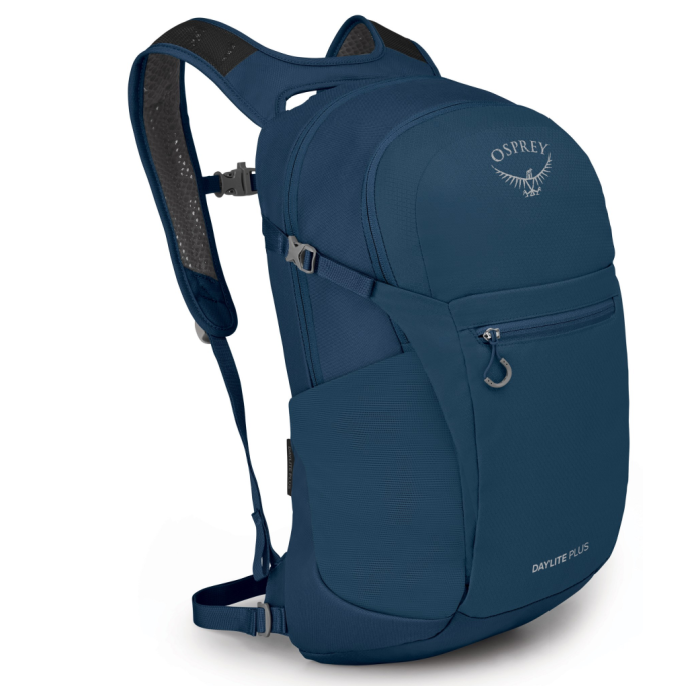
Osprey Daylite Plus
Best Budget Daypack
Price: $75
Weight: 1 lb. 5 oz.
Capacity: 20 L
Frame: None
Pros
- Less expensive
- Versatile
- Comfortable
- Durable material
- Removable hipbelt
- Stylish design
Cons
- Compression strap design isn’t our favorite
- External front pocket isn’t stretchy
The Osprey Daylite Plus is a trendy, comfortable, and affordable daypack. We like using it around town, hiking short-to-moderate trails, and traveling. Its stylish design makes the price tag even more appealing.
The organizational features on the Daylite Plus are better than most other daypacks of this size. Five external pockets allow you to keep water bottles and small items secure, organized, and easy to access on the go. Smart and simple internal pockets offer versatile storage for whatever we need from the wilderness to whiteboard. The internal padded sleeve easily fits up to a 13-inch laptop or a 2-liter hydration pouch.
This model is built to last, and that makes it a standout choice for those wanting a single do-it-all bag that will hold up to hard use. However, that also means it’s a bit heavier, putting it in the middle of this list for weight. Its foam back panel means it’s less compressible than other frameless daypacks, though it’s still more packable than options with frames.
This daypack also has some quirks that may not work well for everyone. The sternum strap is a bit short for folks with broader chests, and it rides a bit awkwardly when fully loaded. We like the compression straps, though they block the main zipper compartment on both sides, so you’ll need to unclip them for full access.
But with clip-on compatibility that works with many Osprey travel bags, a 20-liter capacity that feels bigger than it is, and a durable build, there’s something for everyone in the Daylite Plus. Whether you’re trekking the high country or just lapping your neighborhood, we highly recommend this affordable and comfortable backpack.
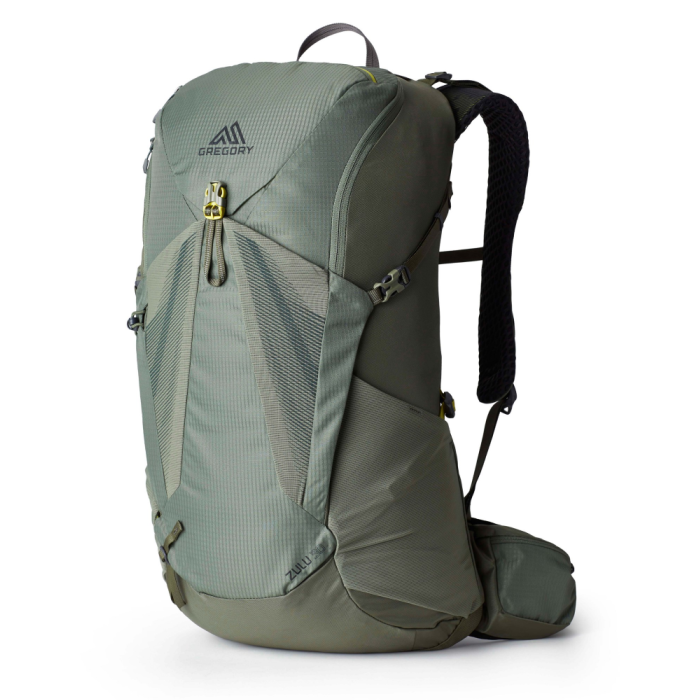
Gregory Zulu 30
Comfortable & Well-Ventilated Backpack for Long Days
Price: $170
Weight: 3 lb. 1.9 oz.
Capacity: 30 L
Frame: Perimeter Wire
Pros
- Enables high organization
- Large volume
- Easy access U-zip opening
- Durable
- Comfortable over long distances
- Adjustable torso
Cons
- Heavier
- Water bottle pockets are tight & shallow
- Few lash points
The Gregory Zulu 30 hits the mark for everything we want in a large daypack. When it comes to managing heavier loads, carrying bulky gear, or hiking longer days, the Zulu is truly built for comfort. This backpack has an adjustable torso length of up to 3.5 inches, so it can fit a variety of body sizes.
The Zulu 30 also features a lightweight internal frame, tons of padding and support on the hipbelt and shoulder pads. Ventilation keeps your back cool if you’re trudging through the heat. Though the mesh water bottle pockets are thin and a bit shallow, they also come with nylon cinch straps to keep your bottles in place so you can hydrate on the go.
This bag has tons of pockets, including seven on the outside alone. Its giant U-zip at the top allows the bag to open widely and quickly for access to the interior and features another zippered compartment for stashing all your small items. A dedicated water bladder pocket and hook are compatible with most two- and three-liter hydration pouches.
This is a large-volume bag, which means that it weighs more. At just over three pounds, the Zulu 30 is one of the heaviest backpacks on our list. We also find the zippered top pocket design a bit awkward, and there aren’t many external lash points. That said, its exceptional capacity, adjustability, and other technical features make up for it.
This model is a worthy choice for those who want a roomy, comfortable daypack but don’t mind a bit of extra weight. We recommend the Zulu 30 as a top option for new hikers who want to bring some extra layers or snacks, for parents carrying the kids’ water and gear, or for a seasoned hiking veteran who needs the larger capacity for a longer trip.
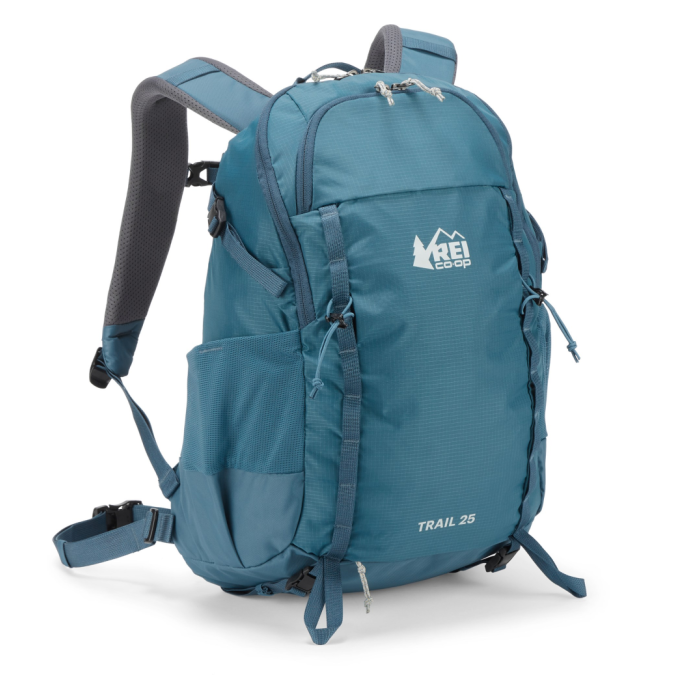
REI Trail 25
Roomy Pack That’s Great for Travel & Long Hikes
Price: $100
Weight: 2 lb.
Capacity: 25 L
Frame: Internal
Pros
- Sturdy
- Durable
- Good price
- Lots of external lash points
- Built-in rain cover
Cons
- Heavy
- Only one external zippered pocket
- Main storage compartment can be awkward
The REI Trail 25 is a great choice for those who need one pack that can do it all. This is a comfortable and durable backpack for almost any hiking adventure. It’s an excellent price point, too, offering premium features of daypacks that cost significantly more.
The padded, mesh-covered straps and plush foam backpanels of the Trail 25 makes it easy to carry all day. The lightweight frame sheet also hits the sweet spot for flexibility and support, an ergonomic design that works well for most body shapes and sizes.
With features like trekking pole attachment points, 16 total external lash points for strapping on gear, bottom accessory straps, and even an included rainfly, this backpack is made for the trail. We’re also big fans of the wrap-around U-shaped zipper on the main compartment. It extends almost to the bottom of the bag, making it easy to pack and access your items when traveling or hiking.
The Trail 25 is a bit bulky for most casual day hikes. We wish this daypack had waist pockets or a wider hipbelt, as it doesn’t distribute weight as well as competitive packs. We also appreciate the two zippered pockets for small items. But, with pockets both located on the upper pack on the main compartment, these can be awkward to access.
That said, these are minor points – the Trail 25 is versatile for travel, hiking, commuting, and even school thanks to its comfort and long-lasting design.
More: REI Trail 25 Full Review
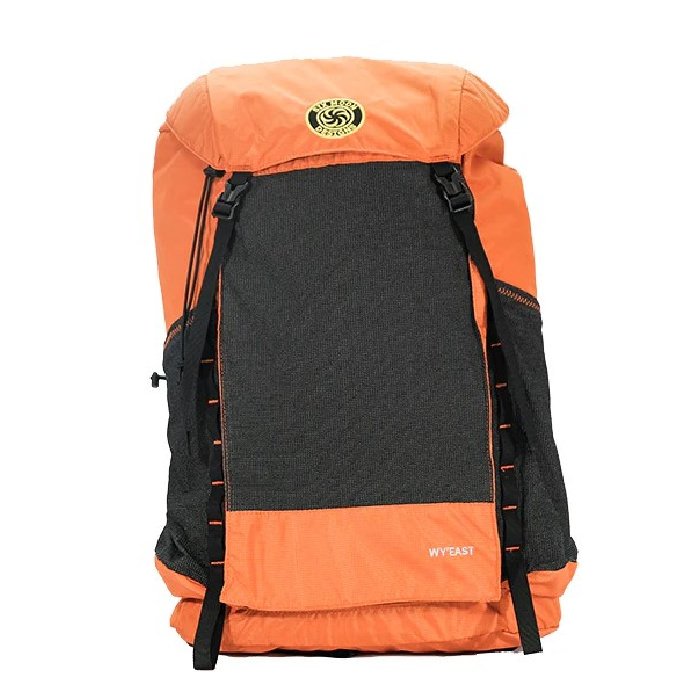
Six Moon Designs Wy’east
Best Ultralight Daypack for Long Day Hikes & Quick Overnights
Price: $185
Weight: 1 lb. 9 oz.
Capacity: 30 L
Frame: Internal
Pros
- Lightweight for the volume
- Frame is a removable sit pad
- Shoulder strap pockets
- Roomy
- Comfortable over long distances
- Durable
- Highly water-resistant
Cons
- Wide shoulder straps don’t sit well on all body types
- Suboptimal brain organization
The Six Moon Designs Wy’east is one of the lightest daypacks we’ve tested, but it comes with one of the largest capacities – 30 liters – and is loaded with convenient features. This bag is great for long hikes when you need to carry bulky items, and it can even work as an overnight pack for those with fully ultralight setups.
We like that the frame doubles as a foam sit pad, and it offers a total of 10 external lash points for strapping on gear. The deep stash pocket and water bottle pockets are made of strong material, so they’ll last longer than the mesh on most other bags.
We love all the pockets of the Wy-East – with this much storage, the bag performs like a backpacking pack but without the bulk or weight. We can easily carry a tablet or books with ease. The Wy’east comes with two useful shoulder strap pockets and wide hip pockets, too. The hipbelt is removable, so this bag is extra versatile as a casual carrier around town or a burly backpack for the deep woods.
However, no bag is perfect. The shoulder straps are a bit wider, so it’s not a great fit for those with narrow shoulders or small frames. Wide shoulder straps don’t sit well on all body types, and there aren’t any load lifters to adjust weight on heavy-carry days. We find the water reservoir compatibility is awkward at best, and the sit pad is difficult to remove from inside when packed. And, the foam frame – while great as a sit pad – doesn’t offer as much structure for heavier loads.
But if you’re looking for a comfy, colorful, and quality daypack that excels in weight and features, this is it. Ultralight hikers looking for the perfect go-between for big-mile day hikes and short overnights also can’t go wrong with the Wy’east.
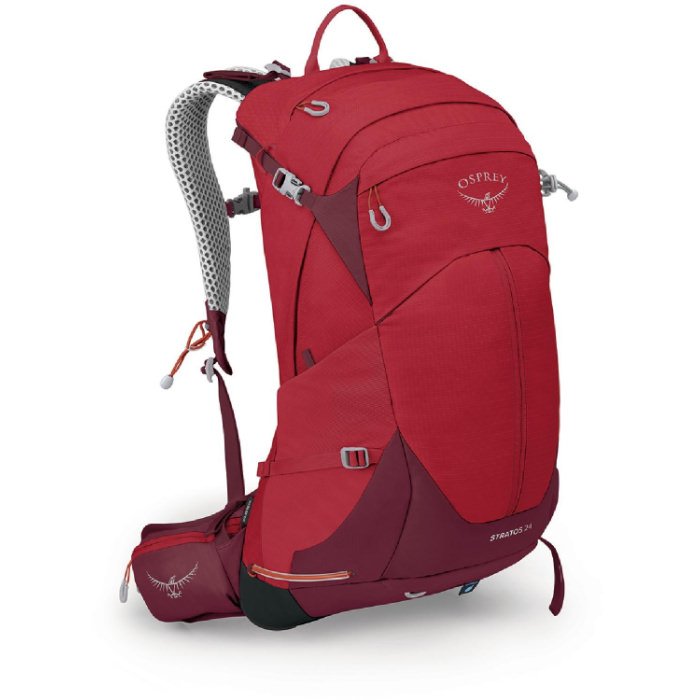
Osprey Stratos 24 / Sirrus 24
Supportive & Well-Ventilated Daypack for Long Hikes
Price: $180
Weight: 2 lb. 12 oz.
Capacity: 24 L
Frame: LiteWire
Pros
- Innovative ventilating back panel
- Useful hiking pole hook system
- Comfortable mesh back
- Good pocket organization
- Includes raincover
- Strong build
Cons
- Expensive
- No outer stash pocket
- Heavier than some
The Osprey Stratos 24 (men’s) and Sirrus 24 (women’s) have some of the most comfortable frames of any daypacks we’ve tested. The Stratos and Sirrus feature stretch-mesh back panels that extend from the shoulder straps to the back to the hipbelt. This soft, breathable mesh feels incredibly cushy on the body.
We love that these Osprey models offer an adjustable torso length. No matter who is using them or how the weight in your pack is distributed, you can easily adjust it to fit your body size. These backpacks seamlessly transfer weight to the hipbelt, so even when they are packed full, you won’t feel uncomfortable.
The Stratos and Sirrus have a solid organizational system as well with convenient gear storage pockets, two pole storage options, hipbelt pockets, and easy-to-reach water bottle holsters. We found the zippered front panel pocket to be a bit cumbersome to access, but many hikers will love this design because it keeps items more secure. And, these bags include a rain cover with a dedicated pocket at the bottom. If you’re hiking in clear conditions, you can remove the pack cover and gain an extra pocket – or keep it to keep your gear dry in afternoon showers.
The main reason they’re a bit further down the list? These bags are so burly that they’re not our first choice for short adventures. We often just don’t need to carry that much or need so much structure. The Stratos and Sirrus are some of the heaviest daypacks on this list and carry the highest price tag. However, when it comes to organization, durability, and support, these packs are head of the class.
Featuring Osprey’s popular Airspeed suspension system, these are exceptionally comfortable and well-ventilated daypacks built for extended adventures. For hikers who need maximum support for any amount of gear, the Stratos 24 and Sirrus 24 backpacks are tough to beat.
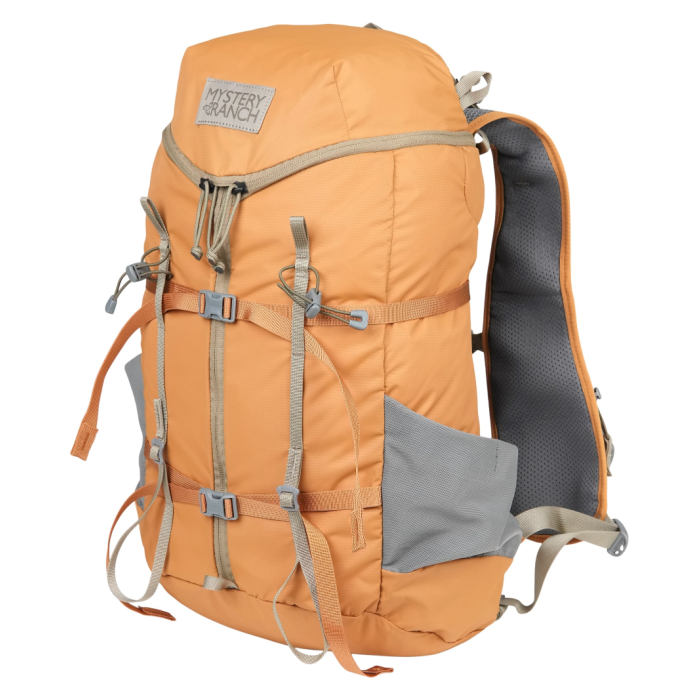
Mystery Ranch Gallagator 25
Streamlined Pack that Balances Support & Simplicity
Price: $129
Weight: 1 lb. 6 oz.
Capacity: 25 L
Frame: Internal
Pros
- Tri-zip allows unrivaled access to gear
- Durable material
- Versatile
- Good organization
- Comfortable back panel
Cons
- Bulky profile
- Lots of straps
The Mystery Ranch Gallagator 25 is one of the most unique and versatile daypacks out there. This bag is made to do it all, whether you’re biking in a city park, boarding the airplane for work, or gearing up for a local hike.
What sets it apart from others on this list is its triple-zipper front access. This model forgoes a mesh stash pocket on the front of the bag in favor of a Y-shaped zipper design. This translates into unrivaled main compartment access. If you want to get to the bottom of your pack without removing everything on top, the tri-zipper is a unique and practical innovation.
This model offers plenty of external lash points and multiple gear loops to bring along anything you need. The broad, comfortable shoulder straps feature two additional cinch pockets and two adjustable and removable sternum straps.
Our biggest issue with the Gallagator 25 comes down to the minimal structure and small organizational pockets. It’s fairly floppy without an internal frame. And, there’s only one large zippered external pocket at the brain. It doesn’t have internal dividers or zippers, so you’ll need to improvise. We also found the water bottle pockets are a bit oversized for even our biggest containers.
Because of the many zippers and long nylon straps, we don’t think the Gallagator 25 is as aesthetic or modern as other bags on this list. But, where it falls short in style, it more than makes up for it with solid construction, excellent comfort, and great accessibility. And, at only one pound, six ounces, the Gallagator 25 is impressively light for how durable it is.
This pack is one of the most innovative on our list. For hikers who prioritize gear access over everything, this Mystery Ranch model is a durable, lightweight, and functional choice that’s built to handle most activities from streets to streams.
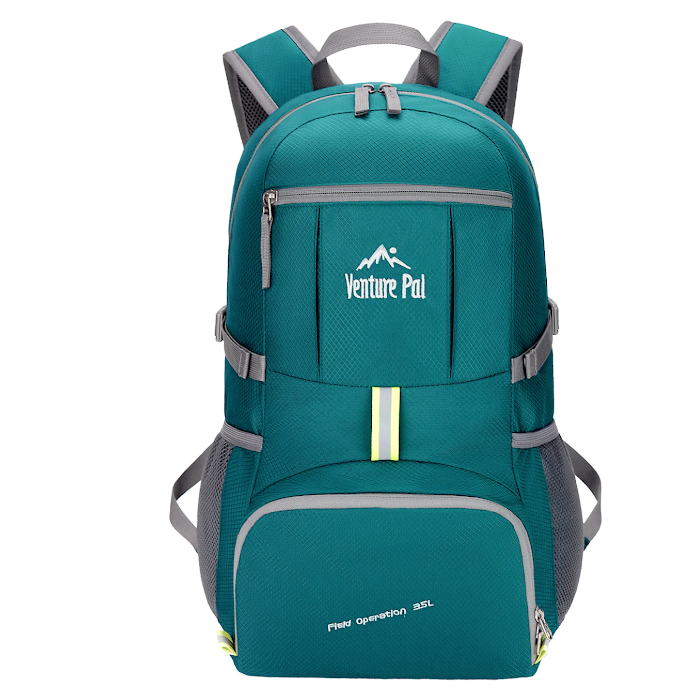
Venture Pal 35
Best Bang for Your Buck
Price: $26
Weight: 11.2 oz.
Capacity: 35 L
Frame: None
Pros
- Good value
- Packs into itself (9"x8")
- Tons of colors
- Simple
- Lots of storage
- Waterproof liner
Cons
- Floppy material
- Less comfortable over long distances
The Venture Pal 35 is the ultimate budget backpack. At only $26, you get a cavernous 35-liter backpack that comes in a dozen colorways and folds into a compact 9-inch by 8-inch package.
Despite its very low price, this bag is loaded with features. It comes with a waterproof liner and an internal pouch big enough for a tablet or a book. The shoulder straps are adjustable and the compression straps help stabilize the pack. This lets you cinch down the volume to reduce the profile when it’s not full. The Venture Pal also comes with three huge zippered pockets and two water bottle pockets, plus a sternum strap with a whistle for support and safety.
At only 11.2 ounces, this is one of the lightest packs on our list – and at 35 liters, it also has the largest capacity. We don’t typically recommend bags over 30 liters when it comes to daypacks, but the Venture Pal is one of the few exceptions. With an excellent size-to-weight ratio and low price, this model bends the rules.
As a lightweight and inexpensive pack, this model has some predictable issues. The Venture Pal is made with solid canvas and nylon material that’s decently durable – though the zippers, stitching, and mesh are not as long-lasting. And over time, the waterproof lining can fail.
And, this backpack doesn’t have any internal structure, so it can look and feel floppy. Plus, it’s not well-suited for heavy loads or for long hikes since it lacks a water reservoir compatible. Having said that, it’s still an impressively versatile option for short hikes, travel, and daily use.
If you’re looking for a backpack that packs small, still offers a ton of space, and is one of the most affordable day bags on the market – this may be the one for you.
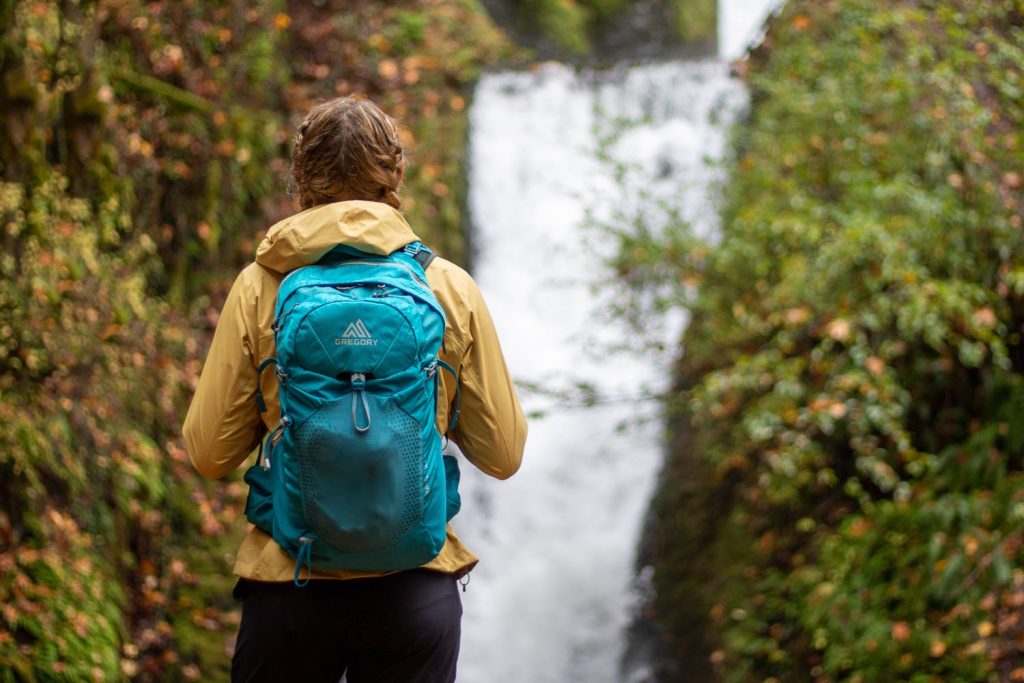
Product Comparison Table
| oSort | Product | Price | Weight | Capacity | Frame | Comfort | Organization | User-Friendliness | Durability | 0 |
Osprey Talon 22 / Tempest 20 View Men's Talon 22 View Women's Tempest 20 |
$160 | 2 lb. 1 oz. / 1 lb. 14.6 oz. | 22 L / 22 L | Internal framesheet | 4.7 | 4.8 | 4.7 | 4.7 | 1 |
REI Flash 22 View at REI |
$60 | 14 oz. | 22 L | None | 4.2 | 4.3 | 4.2 | 4.2 | 2 |
Osprey Daylite Plus View at REI View at Amazon |
$75 | 1 lb. 5 oz. | 20 L | None | 4.4 | 4.5 | 4.3 | 4.5 | 3 |
Gregory Citro 24 H20 / Juno 24 H20 View Men's Citro 24 View Women's Juno 24 |
$170 | 2 lb. / 1 lb. 15 oz. | 24 L | Aluminum alloy Frame | 4.7 | 4.7 | 4.6 | 4.7 | 4 |
Six Moon Designs Wy’east View at Amazon View at Six Moon Designs |
$185 | 1 lb. 9 oz. | 30 L | Internal | 4.3 | 4.4 | 4.1 | 4.3 | 5 |
Gregory Zulu 30 View at REI View at Amazon |
$170 | 3 lb. 1.9 oz. | 30 L | Perimeter Wire | 4.6 | 4.6 | 4.6 | 4.8 | 6 |
LL Bean Stowaway View at LL Bean |
$65 | 14 oz. | 22 L | None | 4.1 | 4.4 | 4.2 | 4.1 | 7 |
REI Trail 25 View at REI |
$100 | 2 lb. | 25 L | Internal | 4.3 | 4.5 | 4.4 | 4.6 | 8 |
Salomon Trailblazer 20 View at Amazon View at Salomon |
$75 | 14.6 oz. | 20 L | None | 4.2 | 4.2 | 4.2 | 4.2 | 9 |
Mystery Ranch Gallagator 25 View at REI View at Amazon |
$129 | 1 lb. 6 oz. | 25 L | Internal | 4 | 4.5 | 4 | 4.3 | 10 |
Osprey Stratos 24 / Sirrus 24 View Stratos 24 View Sirrus 24 |
$180 | 2 lb. 12 oz. | 24 L | LiteWire | 4.3 | 4.4 | 4.1 | 4.3 | 11 |
Venture Pal 35 View at Amazon |
$26 | 11.2 oz. | 35 L | None | 3.7 | 4.4 | 3.8 | 3 |
|---|
How We Test & Methodology
We have been on almost 1,000 day hikes over the years, taking out our packs to ensure that they have everything we need to set us up for success.
COMFORT
When testing daypacks for comfort, we pay close attention to the padding on the shoulder straps and back panel, since these areas are crucial for distributing weight comfortably. We also take into account the load-bearing system to determine how well the pack transfers weight from the shoulders to the hips. We carefully evaluate the pack’s fit and adjustability to make sure it conforms well to different body shapes and sizes. Ventilation is another key factor, so we prioritize backpacks with mesh panels and ventilation channels to help keep the back cool and dry.
ORGANIZATION
A pack’s overall organization is based on how logical and convenient the layout is for stowing and retrieving items quickly. We consider the accessibility of compartments and pockets by checking how easily we can reach, open, and close them while on the move. The main compartment’s design and layout are super important, so we look for features like dividers, mesh pockets, and sleeves that allow you to keep all items – from small to bulky and large – in order, and easily accessible. We also take into account external pockets like stretch mesh side pockets and zippered front and top compartments for quick access to items like water bottles, maps, and snacks. We account for dedicated hydration reservoir pockets, including hose ports and attachment points to keep the hydration system secure. Hipbelt pockets and lid compartments with additional storage are ideal for small items like chapstick or keys. Compression straps and gear loops also play a significant role in stashing bulky items like a down jacket externally without taking up space in the interior.
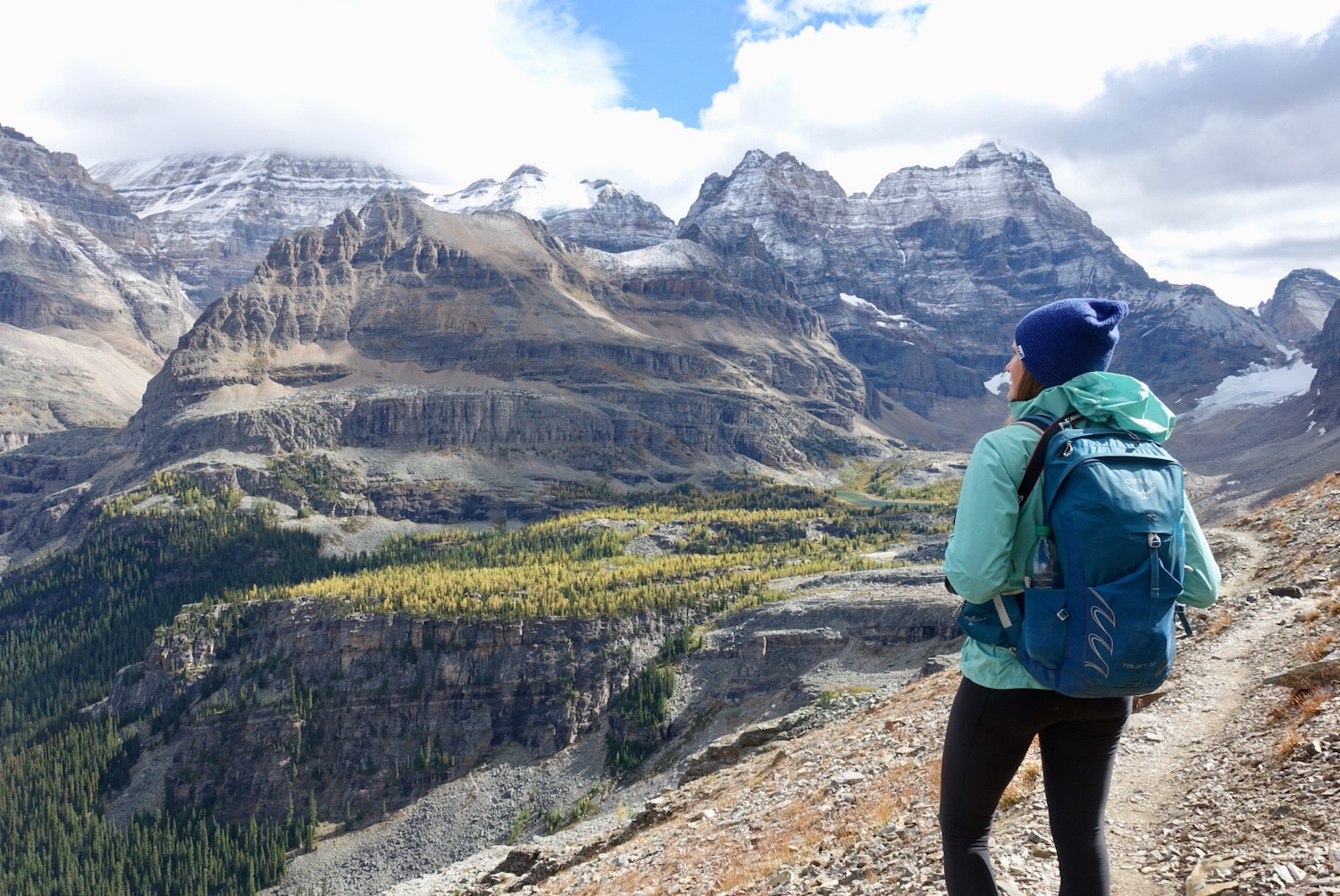
USER-FRIENDLINESS
The simplicity and intuitiveness of a pack’s design are the key to how user-friendly it is, so we look for straightforward adjustments to customize the fit quickly by looking at the comfort and adjustability of the shoulder straps, hipbelts, and back panels, which should be easily modified to accommodate different body types and preferences. We test the functionality of zippers and quick-release buckles, looking specifically for smooth operation and reliability even in challenging conditions. Similarly, zippers should operate smoothly and be positioned for convenience. We also assess how well the water bottle holsters – pockets usually on the side of the backpack – can be reached while wearing the pack, and how easily bottles can be taken out and replaced. The design and placement of hydration system compatibility is also important, so we check how easily a water reservoir can be filled, inserted, and used with a packed bag. And, we evaluate lash points and gear loops for items like trekking poles, helmets, or sit pads in evaluating the overall weight and distribution of the pack so it’s manageable and balances well when fully loaded.
DURABILITY
Durability comes down to the strength and resilience of the materials used to build the backpack. We examine the quality of stitching and how well-reinforced packs are in high-stress areas to add longevity even under the most rugged conditions. Additionally, we evaluate the pack’s resistance to abrasion, tears, and water to see how it holds up against the typical challenges of a hike. The durability of zippers, buckles, straps, and other hardware is also crucial since these components are core to the lifespan of the pack. We also take the packs out onto the trail regularly in all sorts of conditions to assess their performance over time.
WEIGHT & COMPRESSIBILITY
We measure the pack’s weight when empty to ensure the manufacturer’s claims are accurate. We evaluate the materials used in the pack’s construction, looking for high-quality, lightweight fabrics that don’t compromise on durability. The design and structure of a day pack are important when you’re hiking mile after mile, so we look for features like minimalistic frames and reinforced areas to add strength without excessive bulk. We also compare the weight of the pack against its functionality and features to find packs with a balance between lightness and practicality.
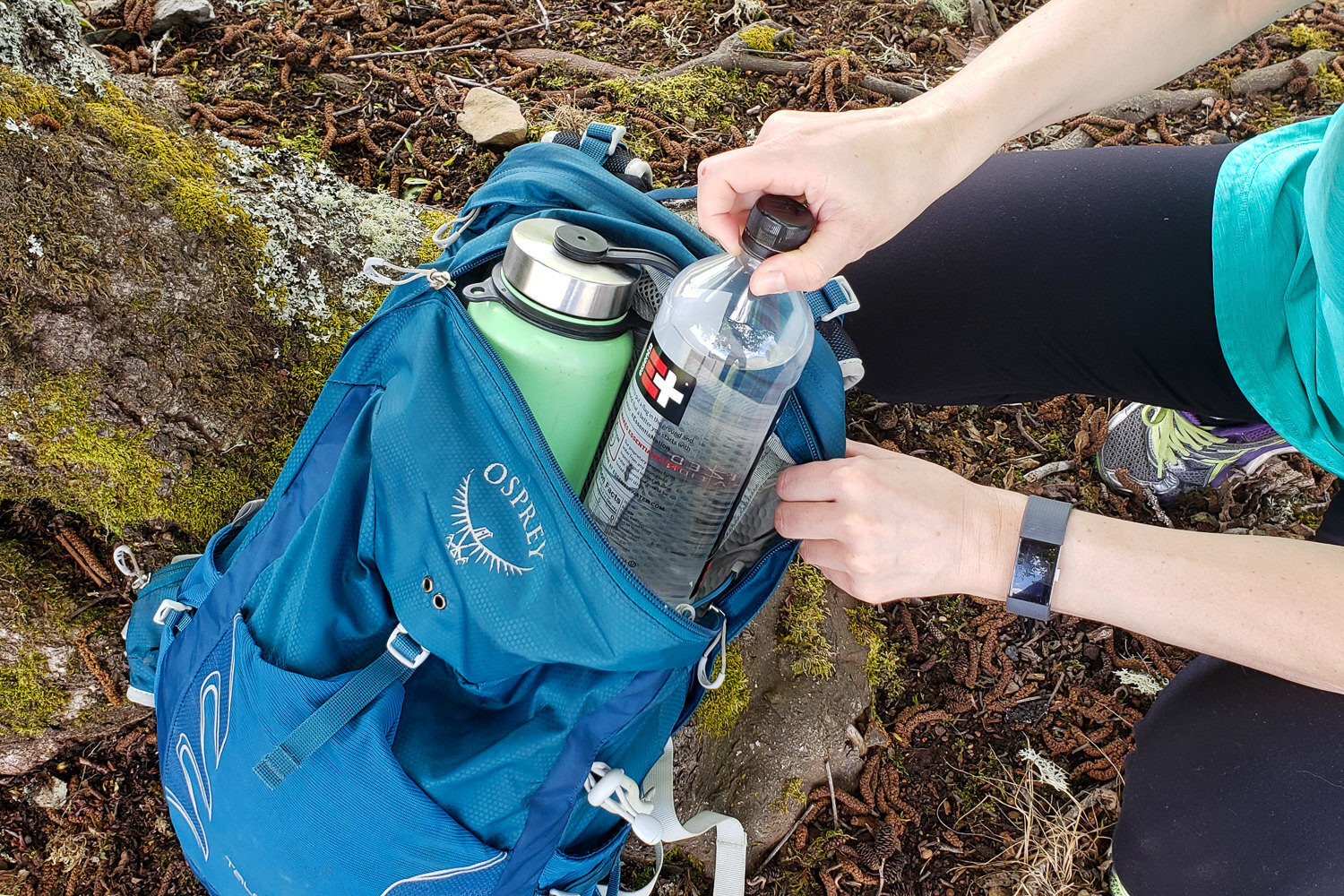
Why Trust CleverHiker
Our CleverHiker team loves to hike, and we’ve covered tens of thousands of miles and 3,000+ days rocking all types of daypacks to determine which are the best of the best. Ian Krammer, gear analyst and lead daypack tester, has used the packs on this list to summit over 700 Colorado peaks over 12,000 feet, including all of the state’s 14,000-foot mountains. His weekly adventures to the high alpine have given him detailed insight into when and how these backpacks stand out. His prior work experience as a qualitative and quantitative researcher dialed in his analytics skills to be as objective as possible about the products he puts through the wringer.
Analysis & Results
We break down our analysis along five dimensions: comfort, organization, user-friendliness, durability, and weight and compressibility. Our results below outline our findings in each of these metrics.
VALUE
Backpacks can cost a pretty penny, so it’s critical to assess the features and durability a pack offers in relation to how much it costs. We are always on the lookout for the diamond in the rough, as well as pricier options that knock it out of the park.
The Venture Pal 35L is our top budget-friendly recommendation thanks to its enormous capacity, many pockets, and incredibly low price. We also love that it zips into itself for a very compact and easily portable option that compliments weekend trips and travel. The REI Flash 22 has been on our list for years as one of the most efficient, versatile, ultralight, and comfy daypacks for any hiking adventure, whether you’re rambling locally or tackling mountain summits.
We’re also big fans of the LL Bean Stowaway as an excellent daypack featuring a collapsible design, plenty of pockets, and more than enough room to carry all the essentials. Finally, we love the Osprey Daylite Plus as an ultra-versatile option for town or trail thanks to great durability, intuitive storage, and a variety of colorways. All four of these packs are under $80 and hit the sweet spot when it comes to an outstanding value.
Finally, we’d be remiss not to highlight the ultra-dynamic Gregory Zulu 30 as an awesome value tent. Despite that this is one of the most expensive packs on our daypacks list, it’s one of the burliest, highest-quality, and versatile large packs we’ve tested. Thanks to a cavernous interior, smart pocket design, and external straps that clip to the side or across the front of the bag, the Zulu is perfect for large summer carries where space and durability are a priority. We also love it for serious winter treks, since the straps work so well to attach snowshoes or an ice axe, and there’s plenty of room for all your layers.
COMFORT
Everyone has a slightly different body shape, size, and type, but when it comes to cozy day packs you can rock all day, there are a few that rise to the top. Two of the most comfortable packs we’ve tested are the Osprey Talon 22 / Tempest 20 and the Osprey Stratos 24 / Sirrus 24. Osprey hits the nail on the head with these packs with ultra cushy shoulder straps, highly adjustable hip belts, and impressively ventilated back panels. The load lifters allow you to dial in a precise fit, and impressively even weight distribution helps reduce fatigue and discomfort during long day hikes.
Also at the top of our comfort rankings is the Gregory Zulu 30, which stands out thanks to its excellent suspension system that offers unrivaled ventilation and support, along with padded shoulder straps and a thick hip belt for smart, easy weight distribution. Overall, we prefer the shoulder straps of this Gregory model over the Ospreys mentioned above – the Gregory straps have a bit more flexibility, and an ergonomically curved sternum belt that lays perfectly across the chest.
Finally, the REI Trail 25 is seriously comfy thanks to ergonomic, curved shoulder straps, a burly back panel, and a breathable mesh lining to keep you cool and comfy on hot days. The wide, adjustable sternum strap and hipbelt offer customizable fit options, and it’s easy to wear for hours at a time, even when fully loaded. The back panel is heavily padded, which is a bit warm and sweaty on hot summer days, but works especially well on cooler days with a heavier pack load and makes for a soft, pillowy feel as you hike.
ORGANIZATION
The most organized packs offer a pocket for every piece of gear you’re bringing, and these packs are exceptional when it comes to storage. At the top of the list is the Gregory Citro 24 H2O and Juno 24 H2O. These bags are designed with exceptional organization, featuring multiple intuitive compartments and a dedicated hydration sleeve that keeps water easily accessible. Internally, they offer a large main compartment with mesh pockets for smaller items to ensure everything has its place. Externally, the stretch mesh side pockets work well for water bottles, a front stuff pocket for quick-access items, and multiple lash points and straps for attaching extra gear.
We also love the Osprey Talon 22 and Tempest 20 for their smart organization. These bags also excel in organization with their well-thought-out pocket placement and storage options. Internally, these packs have a hydration sleeve and multiple pockets, including a zippered mesh pocket with a key clip. Externally, they boast dual stretch mesh side pockets, front stretch pockets, and convenient hipbelt pockets, providing easy access to essentials on the move.
Slightly larger than the Talon and Tempest models are the Osprey Stratos 24 and the Sirrus 24. These are perfect for day hikes thanks to a spacious main compartment with a hydration sleeve and multiple pockets for organizing gear. They also have wide zippered hipbelt pockets, dual stretch mesh side pockets, and even an integrated rain cover stored in its own pocket. We love this addition since you can remove the rain cover on bluebird days and use the bottom pouch for stashing more gear.
The Gregory Zulu 30 also stands out for its ample storage and easy access to gear with multiple compartments and thoughtful design. Its huge main compartment, hydration sleeve, and ultra-stretchy front mesh pocket make accessing your gear as easy as it gets. It also has plenty of external attachment points for trekking poles, and gear straps that can be attached along the side for compression or across the front for holding snowshoes or long, bulky gear outside the bag.
Finally, the REI Trail 25 is one of the best-organized bags when it comes to a great blend of internal and external storage options to enhance its functionality. The main compartment is spacious, several internal pockets are the right size for small items, and it also has a ton of lash points and burly tool loops for carrying additional gear, making it highly versatile and well-organized.
USER-FRIENDLINESS
When it comes to ease of use, the Gregory Zulu 30 is one of our favorites. It features a front U-zip opening that allows for easy access to the main compartment, so you don’t need to dig through the whole bag from the top. It has plenty of external pockets, including a stretch mesh front pocket and dual hipbelt pockets big enough for your phone and snacks.
The REI Flash 22 is also incredibly user-friendly, although it’s much simpler. This bag features a large main compartment with a wide opening for easy packing and access to gear. Its external hydration sleeve accommodates hydration reservoirs up to three liters so you can hydrate on the go. This pack’s minimalist design, including streamlined compression straps and side pockets, means you’ll be able to access and organize your essentials with ease, making it super functional and great for most adventures.
If you’re looking for a pack that makes hydrating easy, the Gregory Citro 24 H20 and Juno 24 H20 come with one of our favorite hydration reservoirs included, the 3D Hydro Reservoir. The magnetic sternum strap attachment allows for one-handed operation so you can sip water without stopping. We also find the dual hip pockets, clever internal pockets, and smooth zippers make access to snacks, maps, and chapstick a breeze.
Last, the Osprey Stratos 24 and Sirrus 24 are awesomely easy to use with a giant main compartment with a zipper front panel that makes for easy packing and access to gear. We’re big fans of the side stretch mesh pockets that offer additional storage, and there are plenty of straps to keep layers ready to go in inclement weather. The internal organization on this one is outstanding, so you’ll find what you need whenever you need it.
At 35 liters, the Venture Pal 35 is one of the larger packs on the list, but the space is broken up into a number of different-sized compartments and zippered pockets. Suitable for day hikes, travel, and everyday use, this one is perfect for staying organized on the go. It can be folded into its own pocket for compact storage, making it one of the most lightweight, packable, and versatile bags out there for hiking, travel, and beyond.
Similar to the REI Flash, the Salomon Trailblazer is a bit simpler, which makes it even more versatile. It’s a great pack for daily use and day hikes of any length due to its large U-shaped zipper that makes access to contents easy, and the pockets on the hipbelt are a great touch for keeping small items organized.Also consider the Osprey Daylite, offering functionality for both outdoor adventures and the daily commute to school or work. The wide, padded hydration sleeve can easily double as a laptop or tablet compartment, and a series of small pockets in the front are ideal for everything from pens to protein bars. If you’re looking for a bag that can transition from the suburbs to a summit, this one does it seamlessly.
WEIGHT & COMPRESSIBILITY
We love a lightweight pack, and all of these bags weigh less than one pound. The Venture Pal 35 is one of the lightest we’ve tested, coming in at only 11.2 ounces, but it still features tons of pockets and storage. It’s constructed from lightweight and durable nylon fabric, and the thin yet supportive padding on the back and shoulder straps helps keep the overall weight down while still providing comfort and support. Plus, its packable design allows it to be folded into its own pocket for easy storage and portability, making it one of the least bulky and lowest-weight options on the list.
The REI Flash 22 is a no-frills backpack designed with weight savings in mind. Its minimalist, durable ripstop nylon stands up against sharp branches and rough ground but is still very lightweight. The streamlined design eliminates unnecessary features without compromising functionality. We also love that the removable back panel doubles as a sit pad, adding versatility without adding weight.
Another super light option is the collapsible LL Bean Stowaway, a durable bag that’s lightweight and water-resistant. Its ultra-functional design has minimal padding and simple compression straps, which reduces bulk but keeps the comfort and support. And, it can be folded into its own pocket, so it’s one of the most portable packs out there for lightweight hiking and travel.And if you’re looking to keep weight down, check out the stylish Salomon Trailblazer, with its simple yet effective harness system and strategically placed padding on the shoulder straps. We’re big fans of this one for its large zipper and hipbelt pockets, which add excellent usability without adding much weight.
DURABILITY
The Gregory Citro 24 H2O / Juno 24 H2O are constructed from high-quality ripstop nylon and feature burly reinforced stitching.n other words, this backpack will last for years in even the most rugged outdoor environments. These packs’ robust design makes them highly resistant to abrasions and tears, so you can use them worry-free on trails and in different weather. Plus, these packs’ hydration reservoirs are among the strongest we’ve tested thanks to with leak-proof construction and an easy-clean design.
Similarly, the Gregory Zulu 30 is designed for durability in a similar way, with extra-strength seams and tough nylon fabric that shows minimal damage even after a thick, sharp bushwhack. This pack is long-lasting on the trail, and the strong zippers and hardware are built to last with frequent use, making it a highly functional pack.The Osprey Stratos 24 and Sirrus 24, as well as the Osprey Daylite Plus, make the list as rugged, tough backpacks that will last season after season. Osprey’s attention to detail makes these among the most durable bags we’ve looked at. Their sturdy construction ensures longevity in various environments, from urban commutes to day hikes. Their protective pockets and thick zippers ensure durability and peace of mind during travel and everyday use.
How to Choose a Hiking Daypack
CAPACITY
The capacity of a daypack is typically measured in liters. Most daypacks have capacities ranging between 10-35 liters. Daypacks with a 20-30 liter capacity tend to be the most popular (and the size we use most often) because they offer enough room for a variety of outdoor adventures and have plenty of space for the 10 day hiking essentials.
If you’re looking for a bag that offers more room, you hike in areas with unpredictable weather and need to carry more gear, or you like spending long days on the trail, you’ll likely want a pack with a more robust weight distribution system (i.e. a hipbelt) and a larger capacity (over 30 liters).
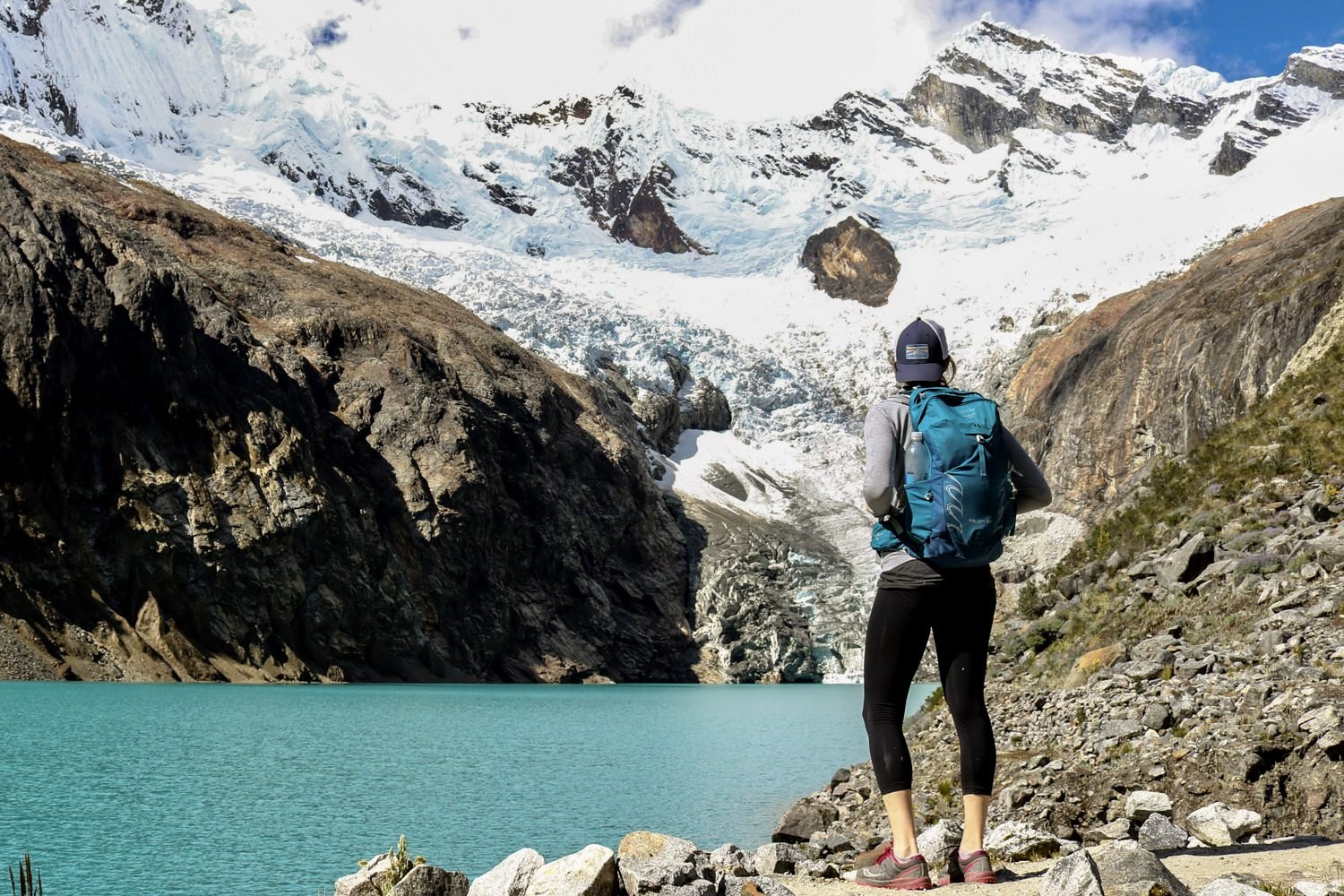
WEIGHT
When you’re just out for the day, weight isn’t as big of a concern, and you can pack along a few extra luxuries. An ultralight daypack will get the job done with ease, although they generally don’t have a frame and need to be packed more carefully. We still recommend keeping your load as light as possible to give yourself the best chance of hiking further for longer and to reduce strain on your muscles and joints.
Sometimes your adventure will call for heavier gear, like when you’re heading deeper into the backcountry, traveling over snow, or carrying equipment like an ice axe or rope for summiting mountains. If this describes the majority of your hiking trips, you should consider one of the more supportive daypacks below. They often have internal frames that provide more structure and better support on long miles.
ORGANIZATION
Most daypacks have a large top-loading compartment for storing the majority of your gear, two external side pockets for water bottles, and a separate compartment on top for stashing smaller items. We prefer bags with additional organization pockets internally and externally to make it easy to compartmentalize and access gear. Many daypacks also have a front mesh stash pocket, which is convenient for storing gear we use often like a raincoat, water filter, or a hat and gloves.
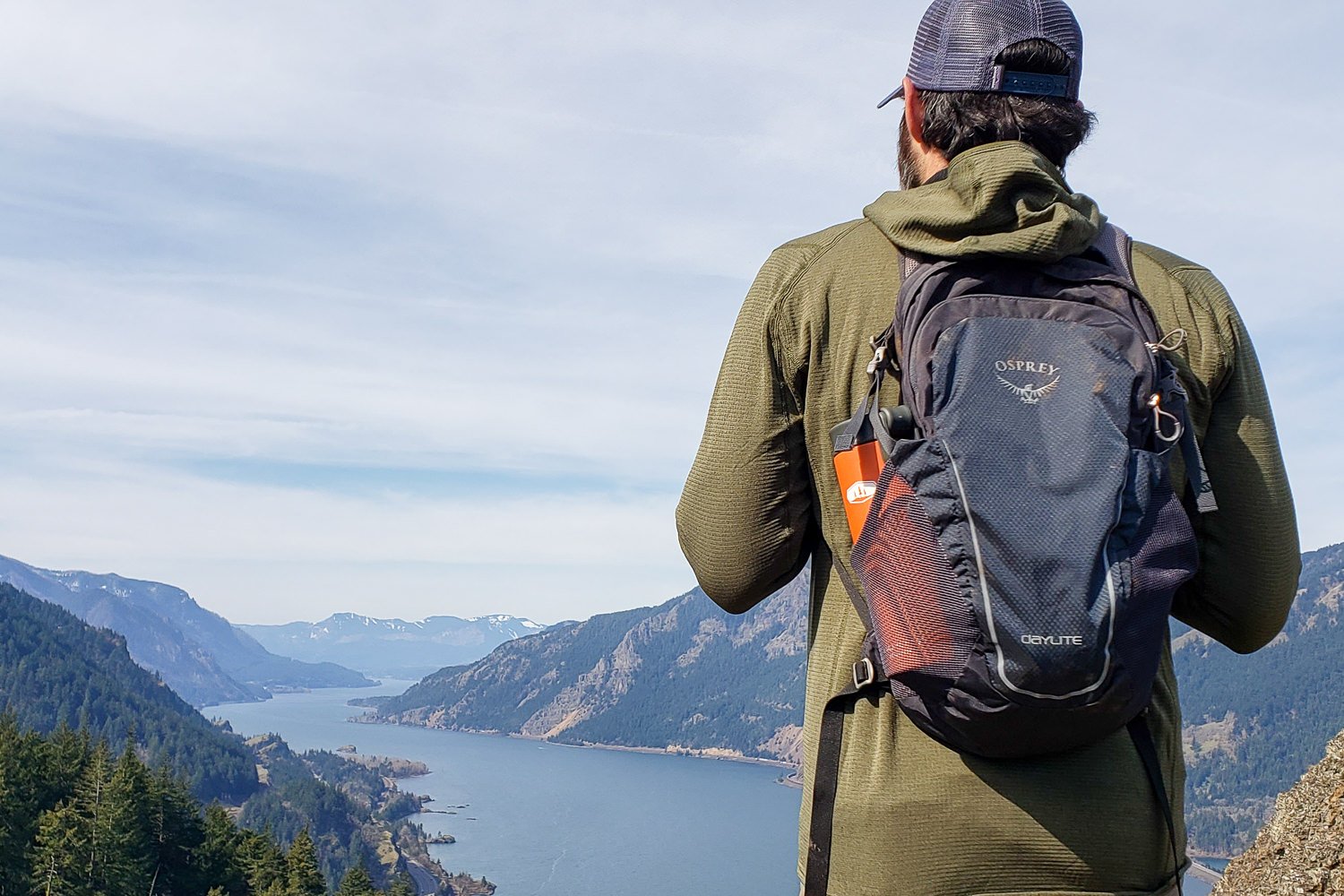
FRAME
Some daypacks are frameless, meaning they have little to no structure to disperse weight across your back and onto your hips. They use a thin foam pad to add a bit of structure to the back. Frameless packs are highly portable and handy for quick trips.
Heavier packs usually feature a frame – typically a rounded piece of lightweight metal – to add structure to the bag. These packs also usually feature plenty of padding, pockets, and a hipbelt, so they’re better when you’ll need more support and storage on longer adventures with heavy loads.
BACK PANEL & VENTILATION
Some daypacks have a mesh back panel design which allows for more airflow and ventilation on the trail. Your back is still going to get sweaty, but many hikers find those types of frames to be more comfortable and keep the actual backpack from sticking to your body. Packs with simple back panel designs usually incorporate foam padding for comfort and add grooves to help with ventilation. Others don’t have any framing, so you’ll need to choose what to pack and how to pack carefully. All three designs work well in their different niches.
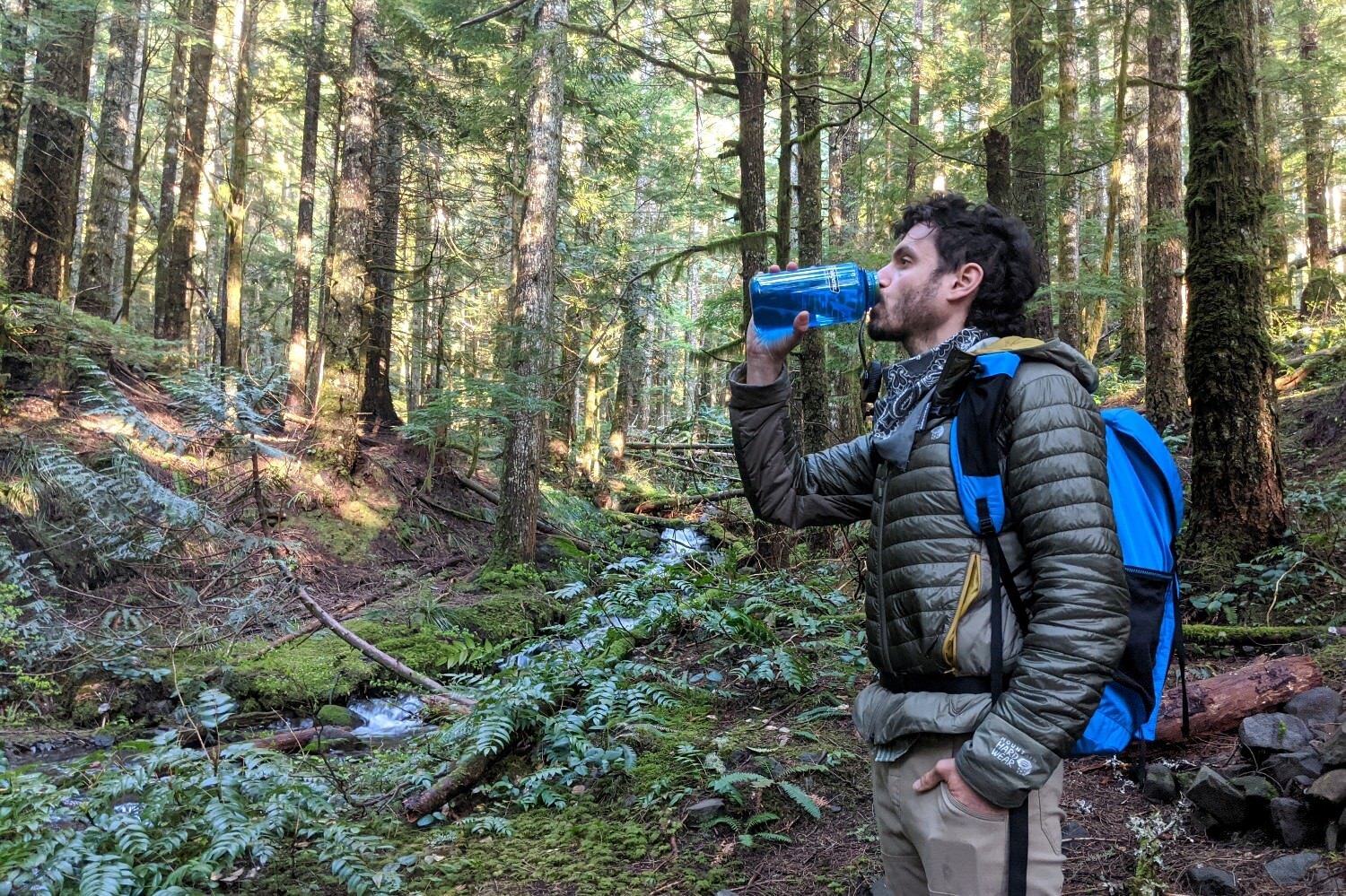
HIPBELT
A hipbelt’s primary function is to distribute the weight of your pack to your hips, to help alleviate strain on your shoulders. Many hip belts also feature convenient pockets, which provide easy access to items you’ll want readily available on the trail like snacks, sunscreen, lip balm, and your phone. Most minimalist daypacks forego hip belts in favor of a simpler nylon strap that still adds a bit of stability and weight transfer. Be sure to try on both types to determine which you prefer.
STERNUM STRAP
Sternum straps are included on almost all daypacks. They give you the option to connect your shoulder straps across your chest for a more secure carry and can help keep your bag from bouncing or swinging too much. It’s a nice touch when the sternum strap has an elastic section for a little give while moving, and the clip has an emergency whistle built in.
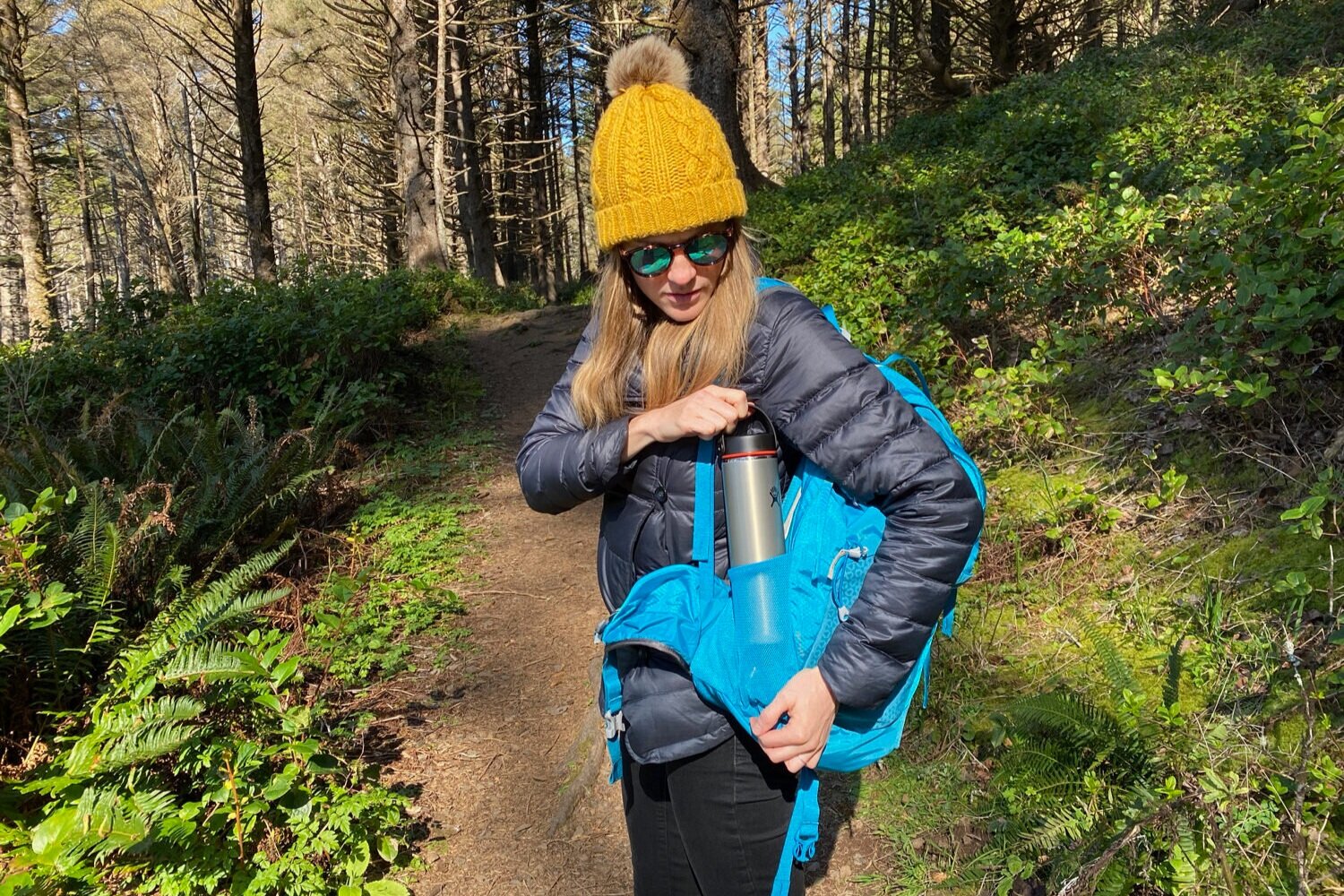
HYDRATION COMPATIBILITY
Water bottles and hydration bladders are the two most common ways to stay hydrated on the trail. If you prefer drinking from a reservoir, also known as a water bladder, make sure to get a daypack that has a hydration port to feed the tube through, and a reservoir pocket to hold the bladder. In general, we prefer the ease and convenience of water bottles, but a water bladder can be essential for extended time above treeline where long water carries can be necessary, or an easy day hike. We also have a great list of the best hydration packs if you’re looking for a daypack that comes with an included hydration system.
WATER BOTTLE HOLSTERS
Hydration is key while hiking, so if you’re not using a hydration bladder, your water bottles should always be easy to access from your side pockets. Some minimalist ultralight packs don’t have water bottle pockets which is far less convenient in our opinion. That’s why every backpack on this list has water bottle holsters for ease of use.
WATERPROOFING
Most daypacks don’t offer much water protection on their own. Your pack will likely shed a light drizzle and morning mist with no problem, but water will eventually seep through your backpack’s seams and work its way into your gear with prolonged exposure. Some daypacks come with pack covers included but they will eventually wet out in heavy rain too.
We recommend packing your gear in waterproof stuff sacks or Ziploc bags inside your pack. You can also line the inside of your backpack with a strong trash bag to keep all your stuff dry. Even when a daypack truly is waterproof, we’ve learned it doesn’t stay that way for long, so we still play it safe and bag up our most important gear when the skies are darkening with rain clouds.
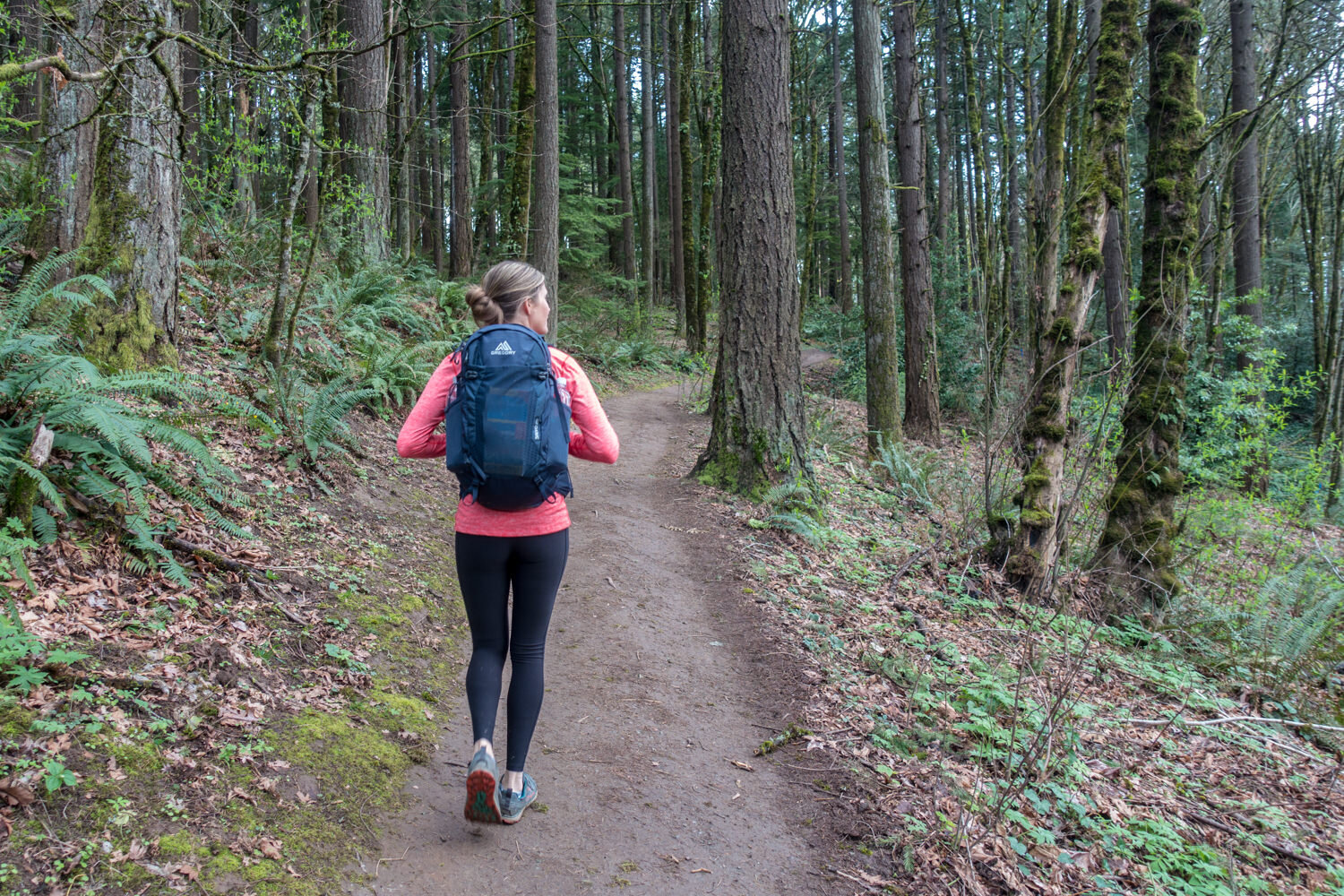
CONCLUSION
An affordable, easy-to-use, and low-weight day pack is essential for a comfortable and fun hike. Whether you’re walking the dog on the local trails or taking on a mountain summit, a quality daypack can make or break your next hike. We hope this guide helped you find the perfect bag for your next adventure so you can pack up and hit the trails.


